How I discovered the joy of the Sunday paper — thanks to this Amex Platinum credit

Update: Some offers mentioned below are no longer available. View the current offers here .
In the years before the pandemic, I had a preflight tradition.
If I had access to an airport lounge, before leaving to board my flight, I would grab a copy of a newspaper to peruse while in the air. Or, if an airline offered newspapers on board, I would almost always take one.
In our era of digital devices, it may seem counterintuitive. But I loved the feeling of being disconnected while up in the air -- all the while flipping pages of the day's top headlines.

For more TPG credit card news and travel tips delivered each morning to your inbox, sign up for our free daily newsletter .
Whenever I did this, I would also distinctly recall a childhood memory, that of my parents as they read the Chinese newspaper at the kitchen table on a weekend morning. The paper they read was in a text that felt familiar yet foreign at the same time.
That's all to say now as a 20-something adult, I savor the opportunity to read something that's printed, to feel the weight of a crisp piece of paper between my fingers. And there's a certain personal nostalgia it brings of a bygone era where life felt a bit more carefree.

So when I discovered that the recently-launched " digital entertainment credit " on The Platinum Card® from American Express also applied to physical, print copies of The New York Times, I eagerly signed up.
In the past, I wrote about how the Platinum's digital entertainment credit -- applicable toward only four services -- could use a revamp to be more useful for the average consumer. While I still think this credit is far too limiting , it actually has served my needs as an existing Times subscriber.
Here is what the up to $240 annual credit applies towards for the Times:
Eligible purchases for The New York Times include any subscriptions (including digital or print news, NYT Cooking, and New York Times Games) made directly through www.nytimes.com/subscription.
I recently swapped my digital subscription to a print and digital subscription. These days, I get the paper delivered to my New York City apartment every Saturday and Sunday. Now, when I'm at home, I look forward to waking up early, grabbing the paper while sipping my favorite latte from a neighborhood cafe.
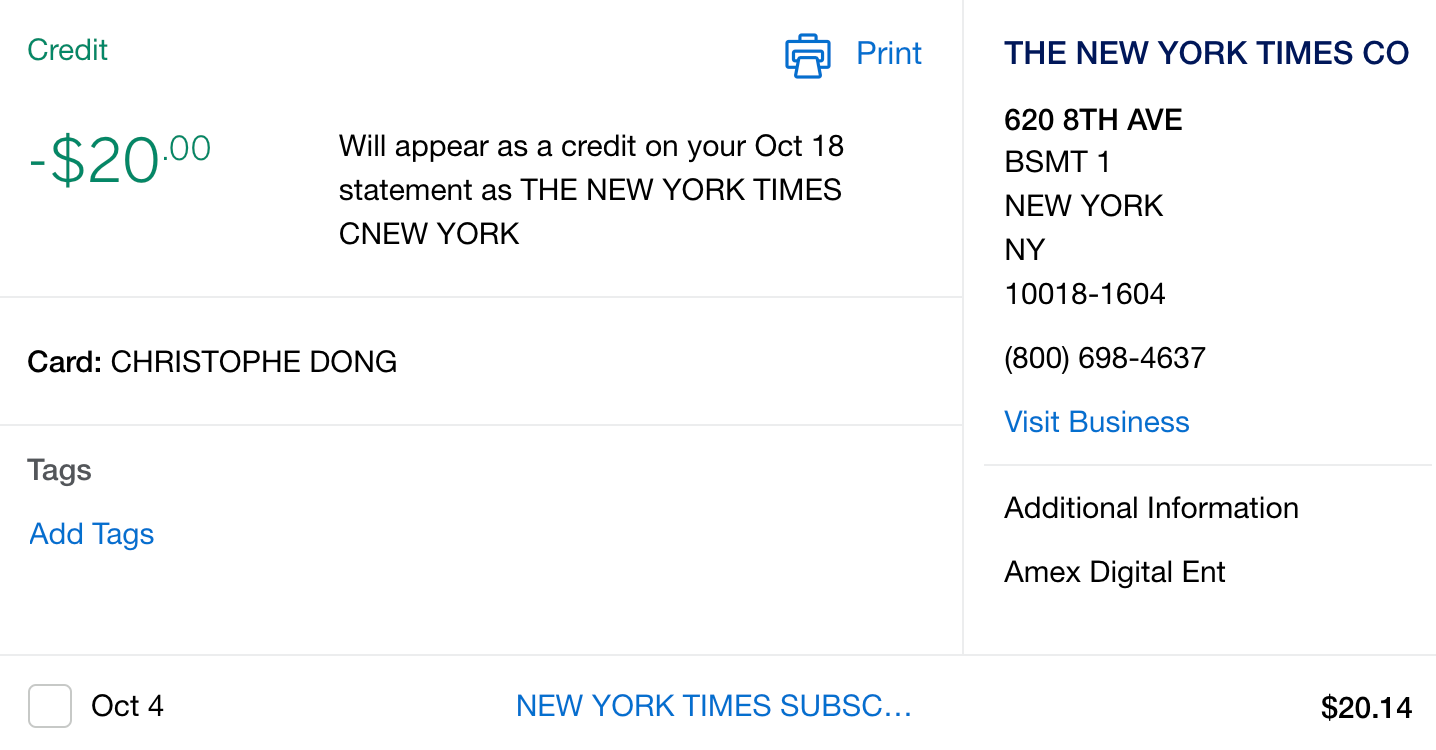
Related: It's a 'lifestyle' card now: A closer look at the Amex Platinum's 6 new benefits launched in 2021
In our current COVID-19 era, newspapers at airport lounges (and onboard cabins on international flights) feel like a relic of the past. Who knows if they will actually return to the airport setting, or if QR codes and endless scrolling will forever replace the satisfying turn of a printed page.
But for now, using my Platinum credit, I at least have something that restores my print fascination. No, it's not exactly like reading the paper at 30,000 feet, all the while occasionally glancing out the window at the world below.
Getting the New York Times home delivery allows my mind to still disconnect in a way that reading online never could do. That's how I discovered -- or really, rediscovered -- the joy of the Sunday paper.
- Credit cards
- View all credit cards
- Banking guide
- Loans guide
- Insurance guide
- Personal finance
- View all personal finance
- Small business
- Small business guide
- View all taxes

You’re our first priority. Every time.
We believe everyone should be able to make financial decisions with confidence. And while our site doesn’t feature every company or financial product available on the market, we’re proud that the guidance we offer, the information we provide and the tools we create are objective, independent, straightforward — and free.
So how do we make money? Our partners compensate us. This may influence which products we review and write about (and where those products appear on the site), but it in no way affects our recommendations or advice, which are grounded in thousands of hours of research. Our partners cannot pay us to guarantee favorable reviews of their products or services. Here is a list of our partners .
8 New Credit Card Benefits We’d Love to See for 2022

Many or all of the products featured here are from our partners who compensate us. This influences which products we write about and where and how the product appears on a page. However, this does not influence our evaluations. Our opinions are our own. Here is a list of our partners and here's how we make money .
The travel world as we knew it won’t be back for some time and credit card issuers had to zig and zag their way through the pandemic to bring value to customers in the new normal. We saw things like the addition of Peloton partnerships, travel credits used at grocery stores, discounted streaming services and even credit statements for Dell products.
Why stop there? As travel hopes to slowly rebound, credit card companies would be smart to continue to find new ways to improve the value of their travel cards .
With that said, as NerdWallet travel writers, here are new credit card perks we’d like to see come to fruition in 2022:
Travel credit card reward ideas
1. vacation rental benefits.
When will credit cards crack the vacation rental puzzle? Granted, Airbnb owes much of its success to shaking up the established travel world, including eschewing traditional models like rewards and credit card partnerships, but it’s time someone figured out how to bridge this gap.
As a digital nomad, I generally spend far more on vacation rentals than traditional hotel rooms, yet my credit cards do very little beyond earning a few points. Even a category spending bonus from one of my cards would shake up this paradigm.
2. Wellness perks
Who knows when I’ll be able to really “travel” like I did pre-pandemic, but when that time comes, I’m going to want a massage. I find it strange that so few travel credit cards offer perks for spas, fitness classes and other wellness activities.
Some cards did offer meditation app subscriptions in recent years, which was a welcome and interesting benefit, but this felt more like a way to promote these apps than a true wellness-inspired offering.
3. Smarter offers
Nobody knows more about my preferences than my credit cards, which track nearly every dollar I spend. So when Chase pops into my inbox with an offer like, “Save 20% at the Olive Garden,” I’m appalled.
Don’t you know I’m a snob, Chase?
Frankly, I wish credit card issuers would get a little smarter with that wealth of data they have collected on me, and stop sending me offers and promotions that couldn’t possibly interest me.
» Learn more: The best airline credit cards right now
4. Uber and Uber Eats purchases
Several higher end American Express cards offer annual credits for Uber rides or Uber Eats, and I have long considered getting one of them. However, these credits apply only to U.S. purchases, which has always been confusing to me because Uber and Uber Eats are available worldwide.
As a result of the exclusion of international purchases, the annual credits (which can be worth hundreds of dollars) aren’t as useful to me because I spend a lot of time outside the U.S.
5. Grocery store bonuses on AmEx cards
American Express grocery/supermarket bonus categories are also currently restricted to U.S. purchases. These supermarket bonus points (4 to 10 points per dollar) are not available to expats, leaving them to earn the standard 1 point per dollar spent.
If AmEx would include global Uber and supermarket purchases, it would make their cards significantly more appealing.
» Learn more: The best cards for groceries right now
6. A staycation credit
Wouldn’t it be nice if credit card companies found a way to encourage us to spend money on travel without going much beyond our cities? With air travel down for the foreseeable future, it would be interesting if airline incidental credits transitioned into a staycation credit: say, $100 credit toward a hotel within 100 miles of your address.
That would give hotels much-needed business while avoiding out-of-state travel. For consumers, it would be a chance to experience the fancy hotel downtown that you’ve always been curious about but haven't since your own bed is just a couple of miles away. Sure, actually executing this kind of credit would be a logistical nightmare, but I’m just the idea person.
7. Rollover travel statement credits
For credit cards that offer airline incidental or hotel resort credits, I’d like to see them roll over to the next year, so people don’t feel pressured to travel until it’s safe. I see this as a win for credit card companies too, as you’d have to continue holding (and paying annual fees on) your card to allow you to maintain those rolled over credits.
Even a simple one-year rollover would go a long way to helping travelers.
8. An outdoors statement credit
One of the great trends of recent years has been an increase in getting outdoors and experiencing nature. Many national parks, state parks and campgrounds charge entrance fees, so it would be delightful for credit cards to offer a statement credit covering those.
So many cards offer TSA PreCheck or Global Entry benefits that weren't really necessary in 2020 or 2021, which presents an opportunity to swap those out. Perhaps an $80 outdoors credit would be apt. That’s the cost of an America the Beautiful Pass, which covers entrance fees for a year at federal recreation sites including national parks.
» Learn more: The best hotel credit cards right now
The bottom line
There’s no shortage of ideas for what the next batch of new credit card perks and benefits could entail. How credit card issuers adapt in 2022 could have a significant effect on what cards customers sign up for, keep or cancel.
How to maximize your rewards
You want a travel credit card that prioritizes what’s important to you. Here are our picks for the best travel credit cards of 2023 , including those best for:
Flexibility, point transfers and a large bonus: Chase Sapphire Preferred® Card
No annual fee: Bank of America® Travel Rewards credit card
Flat-rate travel rewards: Capital One Venture Rewards Credit Card
Bonus travel rewards and high-end perks: Chase Sapphire Reserve®
Luxury perks: The Platinum Card® from American Express
Business travelers: Ink Business Preferred® Credit Card

on Chase's website
1x-5x 5x on travel purchased through Chase Travel℠, 3x on dining, select streaming services and online groceries, 2x on all other travel purchases, 1x on all other purchases.
60,000 Earn 60,000 bonus points after you spend $4,000 on purchases in the first 3 months from account opening. That's $750 when you redeem through Chase Travel℠.

1.5%-6.5% Enjoy 6.5% cash back on travel purchased through Chase Travel; 4.5% cash back on drugstore purchases and dining at restaurants, including takeout and eligible delivery service, and 3% on all other purchases (on up to $20,000 spent in the first year). After your first year or $20,000 spent, enjoy 5% cash back on travel purchased through Chase Travel, 3% cash back on drugstore purchases and dining at restaurants, including takeout and eligible delivery service, and unlimited 1.5% cash back on all other purchases.
$300 Earn an additional 1.5% cash back on everything you buy (on up to $20,000 spent in the first year) - worth up to $300 cash back!

on Capital One's website
2x-5x Earn unlimited 2X miles on every purchase, every day. Earn 5X miles on hotels and rental cars booked through Capital One Travel, where you'll get Capital One's best prices on thousands of trip options.
75,000 Enjoy a one-time bonus of 75,000 miles once you spend $4,000 on purchases within 3 months from account opening, equal to $750 in travel.

The 5 best travel credit cards for 2024 — including the new fine print

TSA Pre-Check fees are waived for Chase Sapphire Reserve cardholders.
Sorting through the cards in your wallet should be an annual chore. You want to double down on the most rewarding perks — which can change from year to year — while omitting other cards that have drifted into mediocrity. It’s a tedious process that can significantly boost your points and miles balances and pave the way for free and upgraded travel.
Let us do the heavy lifting for you. Changes to major credit cards offerings that happen in the yearend cycle are now inked in place, and we’ve been busy sifting the fine print so you don’t have to.

There are a few caveats: Sign-up bonuses come and go, and it is always wise to scour the internet for the best offer. Don’t assume that you need to go with the most prominent, highest-fee cards for hefty rewards. These days, some options with lower annual fees pack a solid punch, too.
Here are the best travel credit cards on the market right now, plus more affordable alternatives well worth considering.
Best overall
American express platinum card.
Annual fee: $695
The quick sell: Even with patchy acceptance of Amex cards abroad, the Platinum card continues to reign supreme for its excellent airport lounge access and instant VIP status at hotels. You can milk its pricey fee for some $1,800 in value before you redeem a single point.
New fine print for 2024: Effective February 2025, cardholders can access Delta Sky Clubs only 10 times a year; previously, there were no such limits. Meanwhile, a new partnership offers cardholders free access to Points.me, a clever tool that makes it easy to compare points-redemption options across a wide variety of airline and hotel programs.
The perks: Access to 40+ Centurion airport lounges is always a draw, though now you’ll have to pay $50 to bring a guest unless you spend more than $75,000 on your card annually. Cardholders also benefit from partnerships with other lounge networks, including Priority Pass (which offers no-cost access to its 1,300+ locations), Plaza Premium, Escape, Lufthansa and Delta Sky Club (when flying Delta). For now, Sky Club use is unlimited; in 2025, it will be restricted to 10 visits per year.

A rendering of plans for the new American Express Centurion Lounge at Newark Airport.
The card comes with a slew of valuable credits. These include $200 for such incidental airline fees as seat assignments and bag surcharges, $200 toward hotel reservations made via Fine Hotels + Resorts program, and monthly credits for Uber and media subscriptions (including Disney+, SiriusXM and the New York Times). You can also score a $155 Walmart+ credit and $100 for Saks Fifth Avenue — not to mention instant gold status with both Marriott Bonvoy and Hilton Honors loyalty programs.
Points (1 point equals 1 cent) can be redeemed like cash via the Membership Rewards portal or transferred to such airline and hotel loyalty programs as Air France/KLM, Delta and Virgin Atlantic. You get five times the points when booking travel via American Express or its Fine Hotels + Resorts program, which confers free breakfasts, room upgrades and late checkout at such hotels as the Hotel Plaza Athénée Paris or the Four Seasons Bali at Jimbaran Bay.
Cheaper alternatives: The Blue Business Plus Card from American Express offers unrivaled points-earning potential among no-annual-fee cards — two points per dollar. If you value airport lounge access, the $395-annual fee Capital One Venture X card is a better deal that offers similar earnings, plus access to Priority Pass, Plaza Premium and a growing number of Capital One lounges.
Best return on points
Chase sapphire reserve.
Annual Fee: $550
The quick sell: This card provides the most value when it comes to redeeming points for free travel. Its built-in credits are great, too.
New fine print for 2024: Here, it’s business as usual.
The perks: Chase Ultimate Rewards points can be redeemed like cash or transferred to airline and hotel partners. You’ll get 10 of those per dollar spent on hotels, rental cars and dining booked through Chase, and 5 points per dollar on flights. You also get 10 points per dollar on Lyft rides and 3 points per dollar on other travel and dining purchases made outside Chase’s ecosystem. All other purchases earn 1 point per $1.
These points come with mega value: One point is akin to 1.5 cents, making a $1,400 flight in premium economy from New York to Paris and back roughly 90,000 points.
As with Amex, you can quickly earn back the annual fee. A $300 annual credit wipes away travel charges, and you get $100 toward TSA PreCheck or Global Entry applications, plus free Priority Pass membership. Book via Chase’s own Luxury Hotel & Resort Collection program, and you’ll get perks like free breakfast and room upgrades, too. Then come such smaller benefits as a $5 monthly credit to DoorDash (plus free DashPass membership) and the free bike rentals, discounts and priority pickups that come with Lyft Pink All Access membership.
Cheaper alternative: The Chase Sapphire Preferred offers excellent points earning and solid redemption values — 1 point for 1.25 cents — but nixes Priority Pass and some other perks in exchange for a lower $95 annual fee.
Best for Star Alliance travelers
United club infinite card.
Annual Fee: $525
The quick sell: Why pay the $650 annual fee to join the United Club as a member when you can get access—for $125 via this card — along with greater access to United MileagePlus award-redemption availability just for holding the card?
New fine print for 2024: You can now earn 10,000 status-qualifying points by swiping this card — up from 8,000 last year. That’s enough to earn Premier Gold status all on its own.
The perks: United’s miles may have lost value over the years, particularly since the airline ditched award charts and raised prices on partners, but it’s the most transparent of the three biggest US carriers. (For one thing, it still shows award availability for most partners on its website and app.) With this card, MileagePlus earnings pile up fast, thanks to 4 miles per dollar on United purchases, 2 miles on dining and other travel and 1 mile on everything else. The path to elite status—measured via Premier Qualifying Points or PQPs — accelerates, thanks to 25 PQPs awarded per $500 spent (up to 10,000 PQPs a year), making most loyalty tiers (including Platinum) relatively attainable, even for non-business travelers.
This is not just about earning potential. You’ll get upgraded on eligible domestic and Caribbean award tickets just for holding the card, and if you redeem miles for a saver economy ticket, you’ll get 10% off in rebate form. Hotel benefits come via a partnership with IHG Hotels & Resorts: Cardholders get a $75 credit to apply toward on-site expenses whenever they stay at these properties, plus automatic Platinum Elite status with IHG One Rewards. (The latter gets guaranteed late checkouts, bonus points and free room upgrades.) When it comes to lounges, unlimited access is included, not just to United Clubs but to those of many Star Alliance partners as well.
Other benefits include a TSA PreCheck or Global Entry credit, two complimentary checked bags per flight, 25% discounts on in-flight purchases and standard travel insurance.
Cheaper alternative: The $95 annual fee for the United Explorer Card nets many of the most important perks, such as upgrades on United award tickets; two miles per dollar spent on United flights, dining and hotels; and two United Club passes.
Best for Delta loyalists
Delta skymiles reserve credit card.
Annual Fee: $650
The quick sell: SkyMiles has seen Zimbabwe-like currency devaluation entailing inflated redemption prices and scant partner availability. That makes this card — which isn’t a great option by most conventional measures — especially valuable to Delta loyalists. It offers an unparalleled three miles per dollar on Delta purchases (or one mile for every other purchase), and holding it bumps you up the upgrade list if you also have Medallion status.
New fine print for 2024: Pay attention to that annual fee; it costs $100 more than it did last year. But new travel credits offset that price hike, and your annual companion certificate can now be used on international flights to Mexico, Central America and the Caribbean.
The perks: In a bid to convert users toward booking hotels on Delta Stays, its own nascent platform, the airline is extending a $200 annual accommodations credit to cardholders. That’s in addition to $20 monthly Resy credits, $10 monthly ride-sharing credits and top Hertz elite status. But lounge access will soon be cut back. Starting on Feb. 1, 2025, cardholders will be limited to 15 day passes per year, rather than four free passes per trip on an otherwise unlimited basis. Additional visits will cost $50 unless you spend $75,000 per calendar year to unlock unlimited access.

The Delta Air Lines SkyLounge at LaGuardia Airport.
Also noteworthy, a free status-qualifying “boost” for cardholders nets you $2,500 Medallion Qualifying Dollars (MQD) at the beginning of the year — getting you halfway to silver under the airline’s new qualification scheme. (You’ll also get 1 MQD for each $10 spent on the card; you’d earn Diamond status with some $280,000 in annual spending at that rate.)
That’s not to mention the more standard travel benefits: free checked bags, a 20% discount on in-flight purchases, a 15% mileage discount on award flights, priority boarding, travel insurance coverage and a credit for either Global Entry or TSA PreCheck.
Cheaper alternative: If lounge access is not important, the Delta SkyMiles Platinum Card offers a happy medium with a lower $350 fee yet fewer benefits. These include a $150 Delta Stays credit, $10 per month for both Resy and ride-sharing services, mid-tier Hertz status, and the same expanded companion certificate perks. In addition to the $2,500 MQD bonus each year, the card earns 1 MQD per $20 spent, plus further basic travel benefits.
Best for American Airlines flyers
Citi/aadvantage executive world elite mastercard.
Annual fee: $595
The quick sell: While American now lets you buy status with credit card spending on everyday purchases with any of its co-branded credit cards, only this one adds complimentary Admirals Club lounge membership. This ordinarily costs $850 — more than this card’s annual fee.
New fine print for 2024: The accrual period for AAdvantage points now stretches from March through February rather than from January through December.
The perks: Airport lounge access is where you extract value from this card; you’ll maximize it by adding up to three authorized users to your account. Setting this up comes with a $175 fee, but it extends your Admirals Club access to those users — and gives them the ability to bring two guests into the lounge as well. It’s great for family members you trust and travel with; lounge membership for four individuals could otherwise cost $3,400.

The Intercontinental Paris Le Grand hotel, one of many IHG properties that extend benefits to United Club Infinite cardholders.
Moreover, handy credits include $10 per month to use with Lyft and Grubhub, $120 toward Avis or Budget car rentals annually, and 20,000 bonus points when you spend some $90,000 on eligible purchases.
Cheaper alternative: While the unique ability to exchange points for AAdvantage miles with the no-annual-fee Bilt Mastercard will end on June 30, 2024, a new partnership with Alaska Mileage Plan makes this option appealing to Oneworld flyers at large.
Bilt has quickly shaken up the industry by offering one point on everything, including rent and mortgage payments (typically not payable with other credit cards). This can help college-age consumers and young adults build credit while earning points.
Monthly promotions can help you earn and spend those points more efficiently, and the card has points-transfer partnerships with more than a dozen loyalty programs, including World of Hyatt and Air France-KLM Flying Blue.

- Latest Issue
- Arts & Entertainment
- Banking & Finance
- Latest Commentary
- Letters to the Editor
- Health Care
- Politics & Policy
- Restaurants
- Sports & Recreation
- Transportation
- Latest News
- Commercial Real Estate
- Residential Real Estate
- Deals of the Day
- Who Owns the Block
- Real Estate Families of New York
- Health Pulse
- Top Earners
- Who's News
- On Politics
- Crain's Forum
- Chasing Giants
- Economic Outlook
- 20 in Their 20s
- 40 Under 40
- Best Places to Work
- Diversity & Inclusion Awards
- Hall of Fame
- Women of Influence
- 2023 Empire Whole Health Heroes Awards (sponsored)
- 2023 New York ORBIE Awards (sponsored)
- Nominations
- Data Center
- Highest-Paid CEOs
- Highest-Paid Hospital Execs & Doctors
- Largest Private Companies
- Largest Public Companies
- Largest Residential Sales
Travel Credit Card Advice
Read up on the latest travel credit card advice from the team at Bankrate. We'll help you navigate all of the travel rewards programs out there and help you pick out a card (or several) that can help you reach your travel goals.
Our Latest Travel Advice

The Platinum Card from American Express vs. The Business Platinum Card from American Express
Which card is better — the Amex Platinum or Amex Business Platinum?

Best credit cards for Uber and Lyft
The right credit card can help you to save money on ridesharing.

Amex Gold benefits guide
Learn about the Amex Gold Card benefits you’ll receive if you sign up for this card.

Your guide to Hawaiian Airlines Dining Rewards
Dining for miles will have you dining in style with Hawaiian Airlines.

Capital One Venture vs. Bank of America Travel Rewards credit card
Considering the Capital One Venture vs. Bank of America Travel Rewards card?

Best credit cards for airport lounge access
Find out the best travel credit cards for airport lounge access.

Why I love the United Explorer Card
Chase’s United Explorer Card offers rewards for travel that include baggage, a luxurious lounge, and so much more. Read to find out our take on the card, and find out if it may be right for you.

Should I get a travel credit card that earns points, miles or both?
The right travel credit card ultimately depends on the type of traveler you are.

When 1.5% cash back is better than 2%
1.5 percent may provide more value once you unpack the entire rewards structure.

Is the Capital One Venture Card worth it?
Capital One Venture Rewards is worth it if you take advantage of all it has to offer.

Discover rewards program guide
Discover offers a broad range of credit cards that let you rack up rewards for cash back, travel and more.

Your guide to gas rewards programs
Revamp your rewards by combining the gas loyalty program of your choice with one of the best credit cards for gas.

Why I love the Chase Freedom Unlimited
Learn why the Chase Freedom Unlimited is a great first credit card option.

Premium credit card comparison: Chase Sapphire Reserve vs. Capital One Venture X vs. Amex Platinum
These three travel cards offer similar benefits and rewards, but which is best for you?

Do I still need a travel agent?
Hire a travel agent or book your own trip? Get the facts before your next vacation.

Why I love the Capital One Venture Rewards Card
The Capital One Venture Rewards card offers numerous travel perks and rewards.

Why I charged a cruise on my credit card
A 0 percent intro card can help you fund large purchases, even a vacation.

TSA PreCheck vs. Clear: Which is better?
In this guide, we’ll weigh their pros and cons to help you decide which one might work better for you, or if you should get both.

Traveler’s guide to the best frequent flyer programs
The major airlines offer frequent flyer programs, but some are better than others.

Best gas credit cards for bad credit
You may find most rewards cards for bad credit are ones geared to specific purchases, such as gas.
Please read our updated Privacy Notice and Terms of Use , effective on December 19, 2019.
The statements expressed in this story are the author’s or sources’ alone, and the content is not endorsed by any entity. Every offer is independently selected by our editors and the products listed do not reflect all companies’ offerings. Credit cards you apply for through our links may earn us a commission; this may impact the presentation of offers.
The Best Credit Cards, According to People Who Know Everything About Credit Cards

Terms apply to American Express benefits and offers. Enrollment may be required for select American Express benefits and offers. Visit americanexpress.com to learn more.
It’s confusing business, calculating all those annual fees and interest rates and rewards points in order to find the credit card that’s best for you, whether your specific lifestyle involves a lot of travel or ride-share services or even just — if we’re talking about the current moment — streaming Netflix. And while there’s a lot of personal-finance-focused content out there these days to help you wade through your options, we at the Strategist have decided to come at the subject in our own way. That is, by talking to a lot of people about the credit cards they use and why they use them.
For the list that follows, we consulted plenty of professionals, including money managers and finance authors, but we also turned to less expected sources who happen to be obsessive (and exceptionally informed) about the world of credit cards. The more traditional of our dozen or so experts include credit-card journalists Eric Rosenberg , Jason Steele , and Holly Johnson ; personal finance experts Trae Bodge and Tiffany Aliche ; and financial planner Nick Holeman . Beyond this core group, we spoke to editors on the masthead at Condé Nast Traveler , analysts at places like Goldman Sachs and Barclays, and even a couple of 20-something buddies who have such passion for their respective favorite credit cards, they agreed to let us moderate them in a high-intensity debate about which is better. The recommendations that emerged include those for frequent flyers, Amazon shoppers, and restaurantgoers — or takeout-orderers, given the current moment. (But then again, in the time of a pandemic, a very straightforward cash-back card may well be your best bet.) Read on to decide for yourself; as always, we’ve broken the recommendations and advice into sections, so if you want to jump to something specific, you can by clicking any of the below links. Note: Prices shown reflect annual fees charged by each card; for cards that don’t charge annual fees, no price is listed.
The best credit card for a pandemic | The second-best credit cards for a pandemic | What’s the deal with APR, or interest rates? | The best credit card for travelers | The best credit card for casual travelers who want to get into rewards | Is there a best airline credit card? | Two more good credit cards for travelers, according to Condé Nast Traveler editors | Why are rewards-points systems so confusing (and are there ways to make them less so)? | The only retailer-affiliated credit card worth having | The best credit card for entrepreneurs | The best credit card for college students | And a debate about travel-points-focused credit cards vs. cash-back credit cards
The best credit card for a pandemic
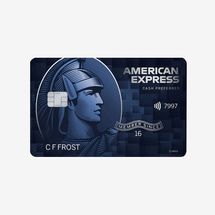
It should not come as a shock that our present moment isn’t the best time to sign up for a card that rewards you for getting on a plane or dining out. While some cards that employ a points system, like both Chase Sapphire® cards and the American Express® Gold Card, also allow you to turn those points into cash, you tend to get more value putting those cards’ points toward things like flights and hotels. Because of that, the most useful credit card to sign up for right now is probably a very simple cash-back card, which, as Rosenberg puts it, “is like getting free money back on the money you spend” — pretty much wherever you spend it — because it allows you to pay off purchases on your statement or balance.
According to Steele, an ideal credit card to sign up for right now is the American Express Blue Cash Preferred card, which offers 6 percent cash back at U.S. supermarkets on up to $6,000 in purchases per year, as well as on certain U.S. streaming services, including Netflix. (You also get 3 percent cash back on transit and U.S. gas station purchases, and one percent cash back on everything else.) “It covers urbanites and suburbanites equally,” Steele says, given that what counts as transit includes trains, taxicabs, ride-share services, and subways. You’ll have to pay a $95 annual fee, “but if you do the math,” Steele notes, “it’s pretty hard to imagine you not earning hundreds of dollars in cash back on that card just with the supermarket benefit alone.” (However, new applicants will have their first annual fee waived.) Tonya Rapley, the author and founder of MyFabFinance , also says the Blue Cash Preferred is the best pandemic card option, because it takes advantage of everyday spending while also allowing you to use points earned to reduce your monthly bill. “A lot of us aren’t doing the things that traditional credit cards reward,” she explains. “That will be really helpful because that way if you don’t have the cash, you can still use the benefits that you reap with that card to pay down your balance.” View card rates and fees here .
The second-best credit cards for a pandemic
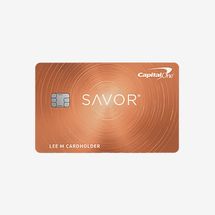
One downside to the American Express Blue Cash Preferred card, according to Rapley, is that it can be harder to get approved for depending on your credit standing. But the experts recommend a couple of credit cards that are easier to get and have similar benefits. Rosenberg told us he also likes the Capital One Savor credit card for the same reasons he likes the Blue Cash Preferred card. “It also has an annual fee of $95,” he notes, “but has really good bonuses for a bunch of categories,” including groceries — with the Savor you’ll get 2 percent cash back at grocery stores, and one percent back on most other purchases. (Its best bonuses, though, are on dining and entertainment — 4 percent cash back — which will be nice for whenever you start dining and entertaining out again.)
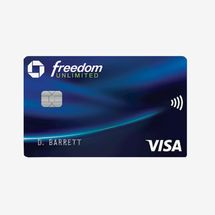
Rapley says another good alternative to the Blue Cash Preferred card could be the Freedom Unlimited card from Chase, which she says tends to be a little more lenient with issuing credit. The Freedom Unlimited earns 1.5 percent cash back on every purchase, and also offers a $200 cash-back bonus if you spend $500 within the first three months of opening an account. There’s no annual fee, and no minimum required to redeem for cash back. Personal finance expert Trae Bodge also likes this card for a pandemic because it has a zero percent intro annual percentage rate — or APR — on purchases for 15 months (after that, a variable APR of 14.99–23.74 percent will apply). Bodge says this generous intro APR will (hopefully) allow you to bypass paying interest on your balance during what is, for most, a financially uncertain period. When it comes to cards that offer 0 percent intro APR, though, Rapley says to be mindful of what happens when you come out of that introductory period. “Some cards will charge you the back interest, so you end up paying the interest on the purchases from that 15-month period if you have not already paid off” the balance by the time the period ends, she warns.
What’s the deal with APR, or interest rates?
Most of the experts we spoke to say that interest rates — or the fees charged on a balance you can’t fully pay off — should be a nonissue, because, according to them, you should really avoid carrying a credit-card balance at all. If you’re worried you won’t be able to pay off a monthly balance, some of the experts say that you’ll be better off with a debit card instead. But Bodge admits this ideal-world scenario isn’t always the reality: “That’s easy enough for us financial experts to say, because we’re going to be more financially responsible than the average person.” Personal finance expert Tiffany Aliche agrees: She says that saying to never carry a credit-card balance is like “telling kids the best way not to get pregnant is abstinence. Of course it is the ideal situation, but there are going to be people with credit-card debt.”
That’s why Aliche and Bodge say you should always be mindful of any card’s interest rate when you sign up for one. In terms of what cards have the so-called best interest rates, Aliche says she’d start by looking for a card with no annual fee, “but it’s really going to be you with your credit score that’s going to determine the interest rate for your card. If you have a score of 750 or above, that’s considered a perfect credit score and you’re going to be able to command a better APR.” Bodge adds that, ideally, you want to look for a card with an APR under 15 percent when comparing available options based on your credit score. (Most of the cards on this list, except for one, come with variable APRs based on credit score, with the lowest amounts generally hovering around 15 or 16 percent.) Aliche, along with Talaat and Tai McNeely, the husband-wife duo behind His & Her Money , say that you can get your credit score for free on websites such as Credit Karma or Experian. Once you know it, they suggest visiting MagnifyMoney , a website that helps you find the credit card that will offer you the best interest rate based on the credit score you provide.
The best credit card for travelers
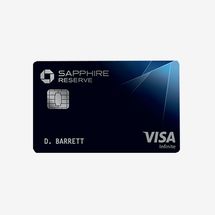
By and large, the Chase Sapphire Reserve was the credit card recommended most often by our experts — eight of them say they have it in their own wallets — especially for people who love to travel. The card comes with benefits like a $300 annual travel credit, access to more than 1,000 airport lounges through Priority Pass, and the ability to transfer airline miles to hotel points. The catch is the Reserve is far from free, with a steep annual fee of $550. But, as Rosenberg emphasizes, this is offset by that annual travel credit, which, if you spend that much a year on travel anyway (and that includes hotels and airport parking), effectively reduces the yearly fee to just $250. Plus there’s the trip cancellation/interruption insurance: When you get stuck somewhere due to, say, a weather delay, Rosenberg notes that airlines aren’t required to do anything other than to help you find the next flight, which could even be the next day — and in that case, you’ll have to pay for your own hotel room. “But if you have a Sapphire card, that interruption insurance will kick in and you can get them to pay for your hotel room so you don’t have to pay out of pocket.”
With the Reserve, you get three points per dollar on travel and dining worldwide and one point per dollar for everything else, as well as money towards DoorDash (through March 2022), and a Lyft Pink membership (through December 2021). Meredith Carey, an associate editor at Condé Nast Traveler and a co-host of the Women Who Travel podcast, says she uses her Reserve for pretty much everything she buys, which means her points add up fast. With her day-to-day purchases alone, she can usually get three or four economy flights a year out of the card, she estimates. The Reserve offers an enticing sign-up bonus of 50,000 bonus points, provided you spend $4,000 on purchases in the first three months of getting the card. But as financial planning expert Nick Holeman warns, one of the biggest ways people lose money with credit cards is by spending more than they otherwise would in order to meet that minimum to get the bonus. That’s why, says Holeman, you should time when you apply for a new credit card around a large purchase that you were already planning on making, which is what he and his wife did with their honeymoon. Bodge says it’s worth noting that meeting the minimum required to reap the Reserve sign-up bonus is something that most people would have a hard time doing in their everyday course of spending. “If you can put your rent on the card, that makes a big difference. But not everywhere you live will let you pay your rent on a card. I can’t pay my mortgage with my card,” she adds.
The best credit card for casual travelers who want to get into rewards
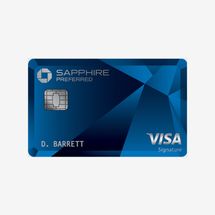
If the Reserve’s $550 annual fee seems like too big of an obligation, several experts say you might want to opt for Chase’s starter Sapphire card, the Chase Sapphire Preferred. The experts call this card the best option for someone who wants to learn how travel rewards like points and miles work, because the Preferred has an annual fee of just $95 and still earns double the points on travel and restaurant expenses, plus one point per dollar on everything else. Rapley says it’s a great option for someone who can’t necessarily qualify for the Reserve but still wants access to the Chase portal, which she says is her favorite booking tool given how easy it makes the redemption process. The simplicity of the Chase portal, she says, makes it “literally like a central booking station to redeem your points instead of having to use them across the board.” The Preferred’s sign-up bonus is 60,000 points after spending $4,000 on purchases in the first three months. One investment banking associate we spoke to told us that both of his roommates started with the Preferred card out of college, before upgrading to the Reserve after two years.
Like the Reserve, the Preferred card also offers that travel cancellation/interruption insurance — which applies to car rentals, too. Ashlea Halpern, the editor-at-large for AFAR Media, says one of the most valuable things to know when you go to rent a car is to skip the rental agency’s coverage and charge the entire rental transaction to your card, which then is your insurance, providing reimbursement up to the actual cash value of the car for collision and theft. (Multiple experts we spoke to, including Halpern, said that Chase has exceptional customer service when it comes to dealing with car rentals.) Rosenberg adds that a rental company’s insurance usually costs about $10–20 a day, so if you use the card as your auto insurance on a ten-day trip, you just saved $100. “That right there in one trip paid for the whole annual fee,” he says.
Is there a best airline credit card?
On the one hand, if there’s an airline you really love and are loyal to — say, United — there are merits to signing up for their card (which, in United’s case, would be the United Explorer Card , which has a $95 annual fee and “comes with a free checked-bag benefit,” according to Rosenberg). But as Halpern points out, an airline could tweak their miles program at any time, and “if you put all of your eggs in one basket and the airline devalues it on a whim, you’re screwed.” Steele says airlines are notorious for lowering the value of their rewards miles and “moving the goal post in a very frustrating way for people who have been using the credit card and saving their miles.”
If you are worried about airlines devaluing points, Steele says you can mitigate this risk by going with a card like the Chase Sapphire Reserve or Preferred because you can use their points across several airlines. “Just because someone says it’s the best airline card doesn’t mean it’s the best for your lifestyle,” says Rapley, noting that a card specific to an airline that doesn’t fly where you’re located or have a nearby hub is essentially useless. “Make sure it’s an airline that you know you would be able to utilize frequently to take advantage of those perks.”
Two more good credit cards for travelers, according to Condé Nast Traveler editors
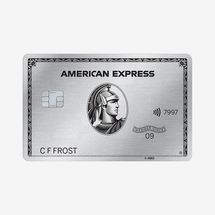
When planning her wedding last year, Stephanie Wu, the articles director at Condé Nast Traveler , signed up for the American Express Platinum Card knowing that she would be spending enough to get the welcome bonus of 100,000 points for spending $6,000 in the first six months of opening the account. As for why Wu went with the Platinum in the first place, she says her main reason was the “unbeatable” five points per dollar on airline-ticket purchases (all other expenses earn one point per dollar). “Between my bachelorette trip, honeymoon, and other weddings I was attending, I knew I’d be on a lot of planes,” says Wu. A few other perks came in handy during her trips, too, like the access to Delta Sky Clubs. “With the Platinum card, you can enter Delta Sky Clubs whenever you fly Delta, no matter what class you’re flying. While AmEx’s own Centurion Lounges are arguably nicer than most Sky Clubs, I found that they often weren’t in the right cities or terminals for my travels — but a Delta Sky Club always was.” These perks do come at a cost, though: The Platinum card charges an annual fee of $695, and is the only card mentioned that doesn’t technically have a regular APR; instead, for anyone who does not pay their balance in full each month, American Express offers the ability to pay off select charges of $100 or more on this card over time, but any monthly balance carried will be subject to a variable APR of 15.99–22.99 percent. View card rates and fees here .
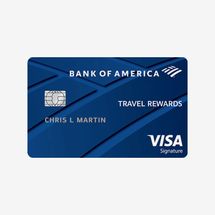
While she now uses a Sapphire Reserve card, Carey also told us how much she loved the more general Bank of America Travel Rewards card that she used for years before making the switch. “The points game is not for everyone,” she says, “since calculating the best way to earn and spend points can sometimes feel like a full time job.” Instead of awarding points you can use to book future travel, this card’s points can be used to pay off any travel-related purchases you’ve charged to it within 12 months (making it more like a cash-back card specifically for travel). As Carey puts it, the card “allows you to reap travel benefits” when you buy your usual groceries, dinners out, clothes — whatever — with it: “All the while, you’re racking up points that you can then use to retroactively pay off travel costs and knock, say, a flight to London or your $33-weekly MTA pass off your previous statement.” Additional perks include no annual fee, points that never expire, and no foreign transaction fees (we should note that none of the cards on this list that are specifically recommended for travel charge foreign transaction fees).
Why are rewards-points systems so confusing (and are there ways to make them less so)?
A main point of confusion with points, according to Holeman, is that they often are not as simple as one point equalling one dollar, as this exchange rate can depend on what you are using the points toward. “If you redeem your Chase points for cash back, you might get $0.01 of value per point; if you redeem your Chase points for travel, then you can get 50 percent more value for each point,” he explains. Steele adds: “The more valuable systems tend to be more complicated.” When it comes to getting the best bang for your points on travel, Halpern suggests utilizing a booking service that can help you find the best way to transfer your points to miles if you’re using a credit card whose points aren’t dedicated to a specific airline (one of Halpern’s favorites is Juicy Miles ).
The only retailer-affiliated credit card worth having
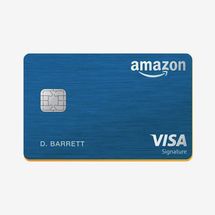
While the general consensus among our experts is that you should probably skip most retailer-affiliated credit cards, the Amazon Rewards Visa Signature Card is an exception. Rosenberg says this is the only retailer-affiliated card he has himself, the reason being the five points per dollar that Amazon Prime members get on all Amazon and Whole Foods purchases. “If you shop at either of those regularly, getting a rate of 5 percent (or five points per dollar) is about the most you’re going to get on any card wherever you spend,” he says, adding that the card has no annual fee. You also earn two points per dollar on purchases at restaurants, gas stations, and drugstores, and one point per dollar on everything else — all of which can be used to pay down your balance. Bodge agrees, describing this as “a really stellar card” both in terms of the offered rewards as well as the simplicity of the benefits. “It’s very clear what you’re getting,” she says. “For me, I need to find a card that’s easy to use with good points on offer for the things that matter to me,” noting that being an avid Amazon and Whole Foods shopper makes her confident that she’ll reap the perks without having to think too much about it. “Any card with no annual fee that has this level of benefits is, I think, one to strongly consider.”
Holeman says the one time to be wary about signing up for a retailer-affiliated credit card, though, is if it’s your first one. For credit-score reasons, he says you want to hold onto the first cards that you get for life “because they help build your credit score over time.” While you “might shop at, say, Old Navy right now,” he continues, “ten years from now, are you still going to want that card? If not, you might be tempted — especially if it has a fee — to close it.” Either way, you’re stuck in a bad situation. “You’re either paying a fee to keep a credit card open that you don’t use and get value from, or you close it to save the fee and take a hit to your credit score.” But Holeman feels differently about the Amazon card, calling a “pretty low-risk” card with a valuable rewards system. “I like it because Amazon is inherently pretty flexible. It’s not like you can only buy one kind of thing — you can buy anything on Amazon,” he says. “And Amazon is probably not going anywhere anytime soon.”
The best credit card for entrepreneurs
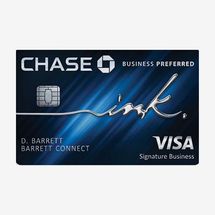
The McNeely team cautions that the best card for a business really depends on what kind of expenses you’re dealing with. But for entrepreneurs just setting up shop and looking to market themselves to potential clients, they suggest the Chase Ink Business Preferred card, which they use for their own business. “For an entrepreneur who spends a good portion of their marketing budget on online advertisements, the Chase Ink Business Preferred is going to make the most sense,” says Talaat McNeely, because it offers triple the points on advertising purchases made on social-media sites and search engines. Rapley also uses this card for her business, for the same reason: The reward categories are areas where her business would be spending either way. “I’m able to get points for the Facebook ads that we run — something we’re already going to do in our business, but now we’re getting perks for it,” she explains. Tai McNeely adds that “the nice thing about Chase points is that you can actually merge or transfer the points to redeem them for something of a larger ticket,” including cash back, business travel through the Chase portal, and even to pay for things on Amazon.
The Chase Ink card has a $95 annual fee, but you get 100,000 bonus points if you spend $15,000 on purchases in the first three months after signing up. In addition to points awarded for social-media and search-engine advertising, this card offers triple the points on charges for shipping, internet/cable/phone service, and travel, plus one point per dollar spent on everything else. (Though there is a $150,000 annual cap on charges that earn triple the points; once you spend more than that, those charges only earn one point per dollar.) A note that because this is a business card, you will need to provide extra documentation about your business in order to sign up.
The best credit card for college students
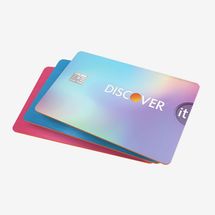
In Steele’s opinion, the biggest deciding factor for college students choosing a credit card should be convenience. That’s why he’ll recommend they get a card from a bank that they already have an account with, which makes it really simple to make a payment. “It’s just one login, payment is instant, and they can keep all their reminders and balances in one place,” he says. But if you’re looking for one that also offers some rewards, three experts named the Discover it Student Cash Back card as a great credit card for college students (The minimum age to apply for your own card, by the way, is 18 years old; and to apply for this one, you will need to show proof of education). It has no annual fee, offers five points for every dollar spent on rotating categories (such as Uber or Walgreens purchases), and one point for every dollar spent on everything else — the points, again, can be used as cash to pay off your balance. According to Aliche, “Cash back is probably the most important reward for a student to start to earn, and the rotating categories give you a little bit of everything.” Credit-card writer Holly Johnson adds that this card gives bonuses for good grades, offering college students a $20 statement credit each year their GPA is 3.0 or higher. Johnson says that “the best card for a student would be one you could grow with, or that has programs you can throw on it,” which is why she likes the Discover it program: “They’ve done a lot of work in the past to ensure that their cards are less predatory when it comes to students, as well as making it easy for students to understand.”
Johnson, Rapley, and Steele all told us college students should really only consider credit cards with no annual fees — with Rapley going so far as to declare students should “absolutely not” apply for cards with annual fees. In fact, she doesn’t necessarily think a student should have a credit card at all unless they have a way to pay it off. “Do you have a job where you can pay it off? If not, it can be a challenge,” she warns. Instead, she says students might be better off being an authorized user on their parents’ or guardians’ card, rather than having their own. Authorized users still get the benefit of building their credit history — plus, they’ll have someone monitoring their expenses, which Rapley notes to be especially useful for someone dipping their toes into the credit-card world. “It’s easy for debt to quickly get out of hand — and a kid might not recognize that until it’s already happened,” she says.
And a debate about travel-points-focused credit cards versus cash-back credit cards
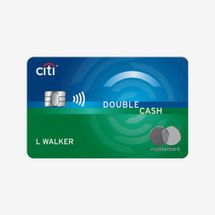
Buddies Jack and Scott, who are both in their mid-20s and work in New York City (Jack in private equity, Scott in sports business development), each love their preferred credit card deeply, for different reasons. Jack swears by the Citi Double Cash card for its cash-back benefits, while Scott stans the Chase Sapphire Reserve card for its travel perks.
Jack: The Citi Double Cash card is one of the simplest but most reliable and most powerful credit cards on the market. You get 2 percent cash back on every single purchase, no categories, no frills — one percent when you make the purchase, and one percent when you pay it off. And there are no annual fees.
Scott : Your pitch is so short because there are just no benefits to your card besides it being 2 percent cash back. With the Sapphire Reserve, it literally would take me an hour to go through every perk that I get. Also, an important bit of color: Jack, you don’t have this card and you can’t get it, or something … right? Your credit score isn’t working out?
Jack: No. I don’t have it because I have the Chase Sapphire Preferred and I got it within four years, so I can’t get the sign-up bonus — you can’t get a bonus for both of the Sapphire cards. The sign-up bonus is a huge part of the value with the Reserve or Preferred, but that’s a one time thing. I got the bonus for the Preferred and it was great, but now I’m just paying an annual fee and not getting a ton of value, which is what, a few years down the line, you’ll be doing with the Reserve. The Citi Double Cash is free from day one and you’re getting two percent back on everything. With your card, you’ve talked about everything you get back on travel and dining — but what percentage of your monthly expenses are on travel and dining?
Scott: Fair. The Reserve is not the card for everyone. However, I think a good number of people could use the sign-up bonus in travel credit. You could redeem it for flights, hotels. So if you’re going to take a road trip and just want to stay in nice hotels, or you’re going to actually fly somewhere — say, to see some family across the country or whatever it may be. All that you have to do is sign up for that card and then in the first three years, it all nets out to be a free card —
Jack: Assuming you can spend $4,000 dollars in the first three months.
Scott: Correct. If you can’t spend $4,000 in the first three months, I would not suggest the Reserve card.
Jack: Has that been easy for you? You’ve made it there no problem?
Scott: No problem at all. The coronavirus has made it a little tricky, simply because my spending has gone down. But still no problem. I’ll easily hit it.
Jack: I don’t mean to paint you as an elitist, but $4,000 in three months is not necessarily an easy task, especially for people whose housing costs — which you can’t pay by credit card — are the largest portion of their spending. But with the Citi Double Cash, no matter who you are, where you are, or what you spend your money on, you will get great value from it.
Scott: I’d say the Reserve is more of a premium experience. But you can’t really compare a cash-back card to a travel card; ultimately, they aren’t one-to-one. My point is that the Chase Sapphire Reserve is the best travel card on the market, bar none. You have a good, but not the best, cash-back card, in my opinion.
Jack: People are spending money every single month at their grocery stores, on home goods, they’re spending on all of these things. That’s what makes my pitch for the Citi card so easy: You pay it off every month and you get 2 percent cash back on everything you spend. If you spent $10,000 over five months, you get $200 back. It’s that simple. And people want to be able to pay off a balance with that cash, instead of redeeming your Chase points in the Chase interface where you’re limited on what you can actually redeem them on.
Scott: Your argument to me can’t be that people are lazy and incapable of understanding the Sapphire’s perks. It’s like Christmas morning when you go through the redemption website — there are new things everyday. Did I tell you that Lyft charges earn you ten times the points back?
Jack: That’s great, but most people don’t rely on rideshare to get from point A to point B.
Scott: But what we’re debating is what’s the better card — what has the most value? With the Chase Sapphire Reserve, I will be more than doubling you on points awarded for dining, travel — the important categories, to some. Yes, there are lots of people that wouldn’t actually get the full value out of the Chase Sapphire Reserve card. And they shouldn’t get that card; they should go for a great cash-back card — which is not yours, yours would be maybe two or three on the list, definitely behind the Capital One Savor card.
The Strategist is designed to surface the most useful, expert recommendations for things to buy across the vast e-commerce landscape. Some of our latest conquests include the best acne treatments , rolling luggage , pillows for side sleepers , natural anxiety remedies , and bath towels . We update links when possible, but note that deals can expire and all prices are subject to change.
- the strategist
- recommended by experts
- credit cards
Deal of the Day
Micro sales, greatest hits, most viewed stories.
- The 11 Very Best Shampoos
- The Strategist’s Two-Day (Actually Good) Sale Is Over — Here’s What You Missed
- What Ariana Madix Can’t Live Without
- This $17 ‘Concrete’ Planter Is So Great I Bought 8 of Them
- The 17 Very Best Work Bags for Women
- Best Credit Cards
- Balance Transfer
- No Annual Fee
On this page
- Our top picks
- Travel credit card details
- How travel cards work
Types of travel cards
- Pros and cons
- How to make the most of a travel card
- Alternatives to travel cards
- Our methodology
- Frequently asked questions
The Best Travel Credit Cards of April 2024
April 5, 2024
How we Choose
Whether you’re an occasional traveler looking to save on your next vacation or a frequent traveler looking for premium travel perks, there’s a travel rewards card for you. We’ll break down our top picks for the best travel rewards credit cards.
Best travel credit cards of April 2024
- Chase Sapphire Preferred® Card : Best welcome bonus
- Capital One Venture Rewards Credit Card : Best for flat-rate rewards
- The Platinum Card® from American Express : Best for luxury travel
- American Express® Gold Card : Best for foodies
- Capital One VentureOne Rewards Credit Card : Best first travel card
- Bank of America® Travel Rewards credit card : Best for occasional travelers
- Citi Premier® Card : Best for everyday spending
- Capital One Venture X Rewards Credit Card : Best for annual credits
- Chase Freedom Unlimited® : Best for pairing with Chase cards
- Credit One Bank Wander® Card : Best for fair credit
- Discover it® Miles : Best for no annual fee
- Wells Fargo Autograph℠ Card : Best for gas and transit
- Southwest Rapid Rewards® Plus Credit Card : Best for budget flyers
- Bank of America® Premium Rewards® credit card : Best for travel credits
- Chase Sapphire Reserve® : Best for point value
- United Quest℠ Card : Best for United MileagePlus members
Additional Options:
- Marriott Bonvoy Boundless® Credit Card: Best hotel credit card
- American Airlines AAdvantage® MileUp®: Best no-annual-fee airline card
Chase Sapphire Preferred® Card
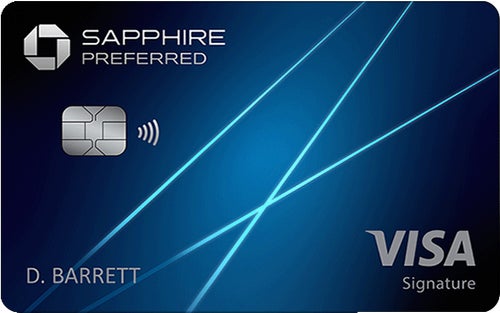
Rewards rate
At a glance, overall rating, why we like this card.
This card has one of the highest sign-up bonuses you’ll find with a mid-level travel card. Plus, it offers generous rewards for your travel and dining purchases and additional benefits like a 25% boost in points value when you redeem your rewards through the Chase Travel℠ portal.
- You'll find more benefits with this card than with other mid-level travel cards, including an anniversary boost and a hotel credit.
- Instead of the typical 1-cent–per-point value you might find on rival travel cards, you can enjoy 25% more value when you book travel through Chase Travel℠.
- Bonus categories are limited to travel and dining, so you have little flexibility in how you earn rewards.
- The card lacks attractive travel perks like airport lounge access or security precheck credits.
Bottom Line
If you are hoping to fast-track your way to your next trip, the Chase Sapphire Preferred offers ample opportunities to earn rewards, along with a generous sign-up bonus.
- Earn 60,000 bonus points after you spend $4,000 on purchases in the first 3 months from account opening. That's $750 when you redeem through Chase Travel℠.
- Enjoy benefits such as 5x on travel purchased through Chase Travel℠, 3x on dining, select streaming services and online groceries, 2x on all other travel purchases, 1x on all other purchases, $50 Annual Chase Travel Hotel Credit, plus more.
- Get 25% more value when you redeem for airfare, hotels, car rentals and cruises through Chase Travel℠. For example, 60,000 points are worth $750 toward travel.
- Count on Trip Cancellation/Interruption Insurance, Auto Rental Collision Damage Waiver, Lost Luggage Insurance and more.
- Get complimentary access to DashPass which unlocks $0 delivery fees and lower service fees for a minimum of one year when you activate by December 31, 2024.
- Member FDIC
Rates & Fees
Capital one venture rewards credit card.
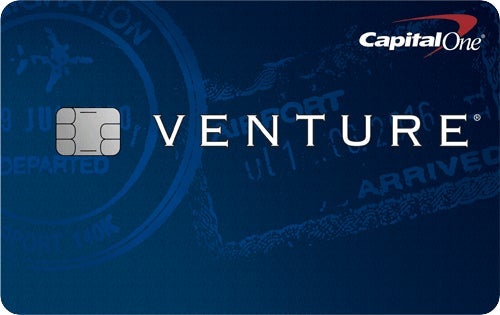
The Capital One Venture Rewards Credit Card offers a great flat rate of 2X miles for all purchases and gives you ultimate flexibility for redemption, including for travel purchases booked outside of the Capital One portal non-travel rewards, such as gift cards (though you may get a lower value). You can also enjoy additional benefits, like an up to $100 credit toward Global Entry or TSA PreCheck®, that can help offset the $95 annual fee.
- Simple earning structure and flexible redemption options
- Generous sign-up bonus
- Lack of large domestic travel transfer partners
- Low redemption value unless using select airlines
The Capital One Venture Card is a top-notch travel card that offers simplicity and valuable perks without the pricey annual fees associated with many premium cards in this category or skimping on rewards.
- Enjoy a one-time bonus of 75,000 miles once you spend $4,000 on purchases within 3 months from account opening, equal to $750 in travel
- Earn unlimited 2X miles on every purchase, every day
- Earn 5X miles on hotels and rental cars booked through Capital One Travel, where you'll get Capital One's best prices on thousands of trip options
- Miles won't expire for the life of the account and there's no limit to how many you can earn
- Receive up to a $100 credit for Global Entry or TSA PreCheck®
- Use your miles to get reimbursed for any travel purchase—or redeem by booking a trip through Capital One Travel
- Enrich every hotel stay from the Lifestyle Collection with a suite of cardholder benefits, like a $50 experience credit, room upgrades, and more
- Transfer your miles to your choice of 15+ travel loyalty programs
The Platinum Card® from American Express
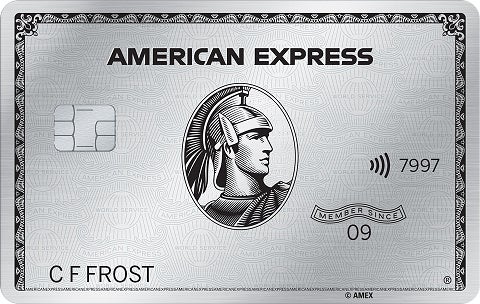
See if you’re pre-approved for this card using our CardMatch tool .
This popular premium card from American Express comes fully-loaded with travel benefits, including luxury lounge access, Hilton Honors gold status (enrollment required), no foreign transaction fees and an impressive list of travel benefits that will help offset the $695 annual fee.
This card currently touts a generous welcome offer: You can earn 80,000 points if you spend $8,000 in your first six months of card membership, which we estimate to be worth around $800 when you book through AmexTravel (where points are worth around 1 cent each).
- Extensive list of travel credits and premium perks
- Ability to transfer points to a host of airline partners, including Delta Airlines
- Limited amount of bonus categories
- Expensive annual fee
For frequent travelers or those looking to make their dream vacation a reality, the Amex Platinum checks every box and provides generous travel credits to offset its high annual fee.
- Earn 80,000 Membership Rewards® Points after you spend $8,000 on purchases on your new Card in your first 6 months of Card Membership. Apply and select your preferred metal Card design: classic Platinum Card®, Platinum x Kehinde Wiley, or Platinum x Julie Mehretu.
- Earn 5X Membership Rewards® Points for flights booked directly with airlines or with American Express Travel up to $500,000 on these purchases per calendar year and earn 5X Membership Rewards® Points on prepaid hotels booked with American Express Travel.
- $200 Hotel Credit: Get up to $200 back in statement credits each year on prepaid Fine Hotels + Resorts® or The Hotel Collection bookings with American Express Travel when you pay with your Platinum Card®. The Hotel Collection requires a minimum two-night stay.
- $240 Digital Entertainment Credit: Get up to $20 back in statement credits each month on eligible purchases made with your Platinum Card® on one or more of the following: Disney+, a Disney Bundle, ESPN+, Hulu, The New York Times, Peacock, and The Wall Street Journal. Enrollment required.
- $155 Walmart+ Credit: Cover the cost of a $12.95 monthly Walmart+ membership (subject to auto-renewal) with a statement credit after you pay for Walmart+ each month with your Platinum Card®. Cost includes $12.95 plus applicable local sales tax. Plus Up Benefits are excluded.
- $200 Airline Fee Credit: Select one qualifying airline and then receive up to $200 in statement credits per calendar year when incidental fees are charged by the airline to your Platinum Card®.
- $200 Uber Cash: Enjoy Uber VIP status and up to $200 in Uber savings on rides or eats orders in the US annually. Uber Cash and Uber VIP status is available to Basic Card Member only. Terms Apply.
- $300 Equinox Credit: Get up to $300 back in statement credits per calendar year on an Equinox membership, or an Equinox club membership (subject to auto-renewal) when you pay with your Platinum Card®. Enrollment required. Visit https://platinum.equinox.com/ to enroll.
- $189 CLEAR® Plus Credit: Breeze through security with CLEAR Plus at 100+ airports, stadiums, and entertainment venues nationwide and get up to $189 back per calendar year on your Membership (subject to auto-renewal) when you use your Platinum Card®. Learn more.
- $100 Global Entry Credit: Receive either a $100 statement credit every 4 years for a Global Entry application fee or a statement credit up to $85 every 4.5 years for a TSA PreCheck® (through a TSA official enrollment provider) application fee, when charged to your Platinum Card®. Card Members approved for Global Entry will also receive access to TSA PreCheck at no additional cost.
- Shop Saks with Platinum: Get up to $100 in statement credits annually for purchases in Saks Fifth Avenue stores or at saks.com on your Platinum Card®. That's up to $50 in statement credits semi-annually. Enrollment required.
- $300 SoulCycle At-Home Bike Credit: Get a $300 statement credit for the purchase of a SoulCycle at-home bike with your Platinum Card®. An Equinox+ subscription is required to purchase a SoulCycle at-home bike and access SoulCycle content. Must charge full price of bike in one transaction. Shipping available in the contiguous U.S. only. Enrollment Required.
- Unlock access to exclusive reservations and special dining experiences with Global Dining Access by Resy when you add your Platinum Card® to your Resy profile.
- $695 annual fee.
- Terms Apply.
American Express® Gold Card
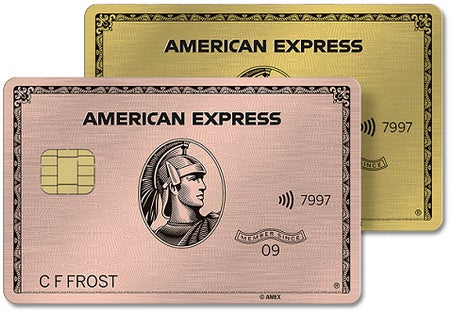
The Amex Gold card offers an industry-leading 4X points at restaurants (including U.S. takeout and delivery) and U.S. supermarkets (on up to $25,000 in purchases per calendar year, then 1 point per dollar) as well as 3X points on flights booked directly with airlines or amextravel.com.
It also features dining benefits, such as an up to $120 in yearly statement credits on select restaurants, including Grubhub and The Cheesecake Factory, and up to $120 in Uber cash annually. In addition to the foodie-friendly rewards rate, this card offers a valuable introductory offer and travel perks like baggage and car rental insurance when you book with your Gold card.
- If you spend a lot on food and dining, its industry-leading rewards rate on restaurant and U.S. supermarket purchases is hard to beat.
- Like the Amex Green card, you can transfer points to multiple air travel partners, including Delta Airlines, and hotel partners, like Hilton Honors.
- Its annual fee is pricier than what’s on some travel credit cards.
- You must redeem travel rewards through amextravel.com.
The Amex Gold is one of the best cards on the market with its generous rewards rate and lucrative introductory offer. If food and travel account for a large portion of your spending, this card’s value more than covers the $250 annual fee.
- Earn 60,000 Membership Rewards® points after you spend $6,000 on eligible purchases with your new Card within the first 6 months of Card Membership.
- Earn 4X Membership Rewards® Points at Restaurants, plus takeout and delivery in the U.S., and earn 4X Membership Rewards® points at U.S. supermarkets (on up to $25,000 per calendar year in purchases, then 1X).
- Earn 3X Membership Rewards® points on flights booked directly with airlines or on amextravel.com.
- $120 Uber Cash on Gold: Add your Gold Card to your Uber account and each month automatically get $10 in Uber Cash for Uber Eats orders or Uber rides in the U.S., totaling up to $120 per year.
- $120 Dining Credit: Satisfy your cravings and earn up to $10 in statement credits monthly when you pay with the American Express® Gold Card at Grubhub, The Cheesecake Factory, Goldbelly, Wine.com, Milk Bar and select Shake Shack locations. Enrollment required.
- Get a $100 experience credit with a minimum two-night stay when you book The Hotel Collection through American Express Travel. Experience credit varies by property.
- Choose the color that suits your style. Gold or Rose Gold.
- No Foreign Transaction Fees.
- Annual Fee is $250.
Capital One VentureOne Rewards Credit Card
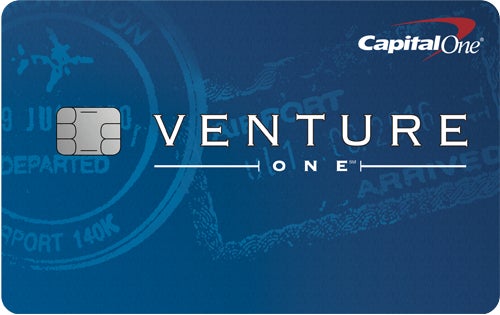
This card is ideal as a first travel card because you don’t have to strategize to offset an annual fee every year, but can still enjoy terrific travel benefits. You can redeem for various travel purchases like hotels, rental cars and flights either through Capital One’s travel portal or other travel websites. Plus, you can transfer your rewards to partner loyalty programs — adding more flexibility in your travel.
- No need to offset the cost of an annual fee
- Low minimum spend for sign-up bonus
- Lower rewards rate and less perks than cards with an annual fee
- Reduced value of your miles when you use the rewards for non-travel redemption options, such as statement credits or gift cards
This card offers a straightforward earning structure and an attainable sign-up bonus, allowing cardholders to rack up miles while not worrying about an annual fee.
- $0 annual fee and no foreign transaction fees
- Earn a bonus of 20,000 miles once you spend $500 on purchases within 3 months from account opening, equal to $200 in travel
- Earn unlimited 1.25X miles on every purchase, every day
- Enjoy 0% intro APR on purchases and balance transfers for 15 months; 19.99% - 29.99% variable APR after that; balance transfer fee applies
Bank of America® Travel Rewards credit card
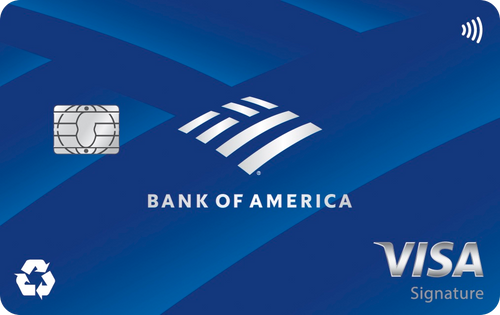
The Bank of America Travel Rewards credit card is a great choice for infrequent travelers who want ultimate flexibility when it comes to earning and redeeming rewards. Cardholders can redeem points for statement credit to pay toward travel expenses, like flights, hotels, vacation packages, cruises, rental cars or baggage fees. Additionally, you can redeem for dining purchases.
You can also take advantage of its sign-up bonus — 25,000 online bonus points if you spend $1,000 in your first 90 days, redeemable for a $250 statement toward travel and dining made on your credit card within the last 12 months, including on third-party sites like Expedia or Travelocity.
- Ultraflexible redemption policy that can cover some purchases outside travel
- Can redeem rewards as a statement credit months after the initial travel or dining purchase
- Rewards rate for travel purchases not as lucrative as others in this category
- Not the most valuable sign-up offer
Despite the fact that cardholders won’t be able to weigh spending toward a particular category to maximize their points, this card is a great fit for occasional travelers who still want to earn rewards but without having to pay an annual fee.
- Earn unlimited 1.5 points per $1 spent on all purchases, with no annual fee and no foreign transaction fees and your points don't expire as long as your account remains open.
- 25,000 online bonus points after you make at least $1,000 in purchases in the first 90 days of account opening - that can be a $250 statement credit toward travel purchases.
- Use your card to book your trip how and where you want - you're not limited to specific websites with blackout dates or restrictions.
- Redeem points for a statement credit to pay for travel or dining purchases, such as flights, hotel stays, car and vacation rentals, baggage fees, and also at restaurants including takeout.
- 0% Intro APR for 15 billing cycles for purchases, and for any balance transfers made in the first 60 days. After the Intro APR offer ends, a Variable APR that’s currently 18.24% - 28.24% will apply. A 3% Intro balance transfer fee will apply for the first 60 days your account is open. After the Intro balance transfer fee offer ends, the fee for future balance transfers is 4%.
- If you're a Bank of America Preferred Rewards® member, you can earn 25%-75% more points on every purchase. That means instead of earning an unlimited 1.5 points for every $1, you could earn 1.87-2.62 points for every $1 you spend on purchases.
- Contactless Cards - The security of a chip card, with the convenience of a tap.
- This online only offer may not be available if you leave this page or if you visit a Bank of America financial center. You can take advantage of this offer when you apply now.
Citi Premier® Card
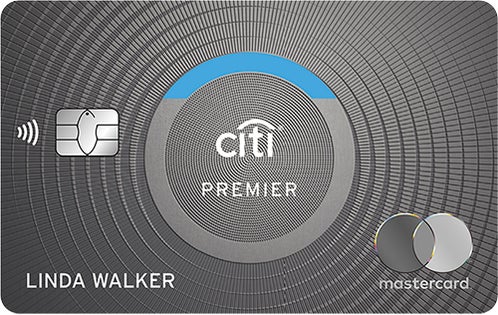
If you can’t decide between a travel or general rewards credit card, the Citi Premier offers the best of both worlds with a rewards rate of 3X points for every $1 spent on air travel, hotels, restaurants, gas stations and supermarkets, as well as one point per dollar spent on all other purchases. Plus, for a limited time, earn a total of 10X points per $1 spent on hotel, car rentals, and attractions (excluding air travel) booked on the Citi Travel portal through June 30, 2024.
The Citi Premier card is currently offering a valuable sign-up bonus of 60,000 points for spending $4,000 in the first three months in addition to its flexible redemption options and exclusive side benefits.
- Annual hotel credit when booked through thankyou.com or 1-800-THANKYOU
- Earn bonus rewards for select travel and everyday purchases
- Domestic airline transfer partner limited to JetBlue
- No travel insurance, which is typical for travel cards in this tier
The Citi Premier card is a smart choice for frequent travelers who want to use a single rewards card for the bulk of their everyday spending and offers premium perks for a reasonable annual fee.
- Earn 60,000 bonus ThankYou® Points after you spend $4,000 in purchases within the first 3 months of account opening. Plus, for a limited time, earn a total of 10 ThankYou® Points per $1 spent on hotel, car rentals, and attractions (excluding air travel) booked on the Citi Travel℠ portal through June 30, 2024.
- Earn 3 Points per $1 spent at Gas Stations, Air Travel and Other Hotels
- Earn 3 Points per $1 spent at Restaurants and Supermarkets
- Earn 1 Point per $1 spent on all other purchases
- Annual Hotel Savings Benefit
- 60,000 ThankYou® Points are redeemable for $600 in gift cards or travel rewards at thankyou.com
- No expiration and no limit to the amount of points you can earn with this card
- No Foreign Transaction Fees on purchases
Capital One Venture X Rewards Credit Card
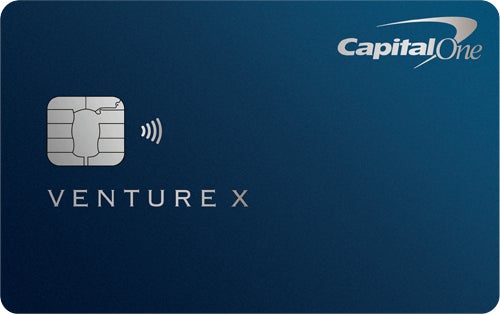
The Venture X is an instant top contender in the premium card market with its fully-loaded annual benefits that can be worth over $400. Yearly perks like bonus miles on your account anniversary (equal to $100 in travel) and a $300 travel credit when you book travel through Capital One Travel, can help cover the annual fee. Compared with other high-end travel rewards credit cards, the $395 annual fee is modest, and many travelers will come out well ahead.
- You can enjoy a fairly simple rewards structure with unlimited 2X miles in all purchase categories, in addition to bonus rewards in Capital One travel categories.
- The card offers statement credit for Global Entry and TSA Precheck, which adds to your overall savings.
- The sign-up bonus is generous, but it requires a high spend.
- While not unusual, you'll need excellent credit to be eligible for this premium card.
Travel rewards cards packed with this many features typically come with sky-high annual fees, but the Capital One Venture X Rewards Credit Card delivers with luxury benefits and a more down-to-earth annual fee.
- Earn 75,000 bonus miles when you spend $4,000 on purchases in the first 3 months from account opening, equal to $750 in travel
- Receive a $300 annual credit for bookings through Capital One Travel, where you'll get Capital One's best prices on thousands of trip options
- Get 10,000 bonus miles (equal to $100 towards travel) every year, starting on your first anniversary
- Earn unlimited 10X miles on hotels and rental cars booked through Capital One Travel and 5X miles on flights booked through Capital One Travel
- Earn unlimited 2X miles on all other purchases
- Unlimited complimentary access for you and two guests to 1,300+ lounges, including Capital One Lounges and the Partner Lounge Network
- Use your Venture X miles to easily cover travel expenses, including flights, hotels, rental cars and more—you can even transfer your miles to your choice of 15+ travel loyalty programs
- Elevate every hotel stay from the Premier or Lifestyle Collections with a suite of cardholder benefits, like an experience credit, room upgrades, and more
Chase Freedom Unlimited®
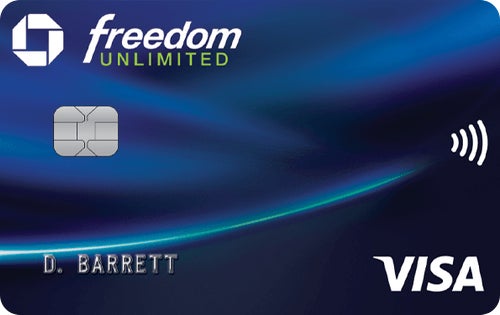
Its flat rate and bonus categories, especially for the first 12 months, make it a great companion for premium Chase cards. If you want to rack up as many Chase Ultimate Rewards points as possible and then use them toward your next trip, then this card can help you get there. Plus, its welcome offer can help boost rewards.
- Its bonus earnings for the first 12 months boost your rewards and this card’s upfront value.
- You can pool this card’s rewards with certain Chase travel cards to get more redemption and transfer flexibility.
- Other cards have better travel benefits or welcome offers if you want as many rewards and perks as possible.
- You won’t get the full potential of this card without pairing it with a premium Chase card, which comes with annual fees.
This card’s true potential lies in pairing it with certain Chase travel cards. Make sure you use it to pool your Ultimate Rewards points for more value when redeeming for travel.
- Intro Offer: Earn an additional 1.5% cash back on everything you buy (on up to $20,000 spent in the first year) - worth up to $300 cash back!
- Enjoy 6.5% cash back on travel purchased through Chase Travel, our premier rewards program that lets you redeem rewards for cash back, travel, gift cards and more; 4.5% cash back on drugstore purchases and dining at restaurants, including takeout and eligible delivery service, and 3% on all other purchases (on up to $20,000 spent in the first year).
- After your first year or $20,000 spent, enjoy 5% cash back on travel purchased through Chase Travel, 3% cash back on drugstore purchases and dining at restaurants, including takeout and eligible delivery service, and unlimited 1.5% cash back on all other purchases.
- No minimum to redeem for cash back. You can choose to receive a statement credit or direct deposit into most U.S. checking and savings accounts. Cash Back rewards do not expire as long as your account is open!
- Enjoy 0% Intro APR for 15 months from account opening on purchases and balance transfers, then a variable APR of 20.49% - 29.24%.
- No annual fee – You won't have to pay an annual fee for all the great features that come with your Freedom Unlimited® card
- Keep tabs on your credit health, Chase Credit Journey helps you monitor your credit with free access to your latest score, alerts, and more.
Credit One Bank Wander® Card
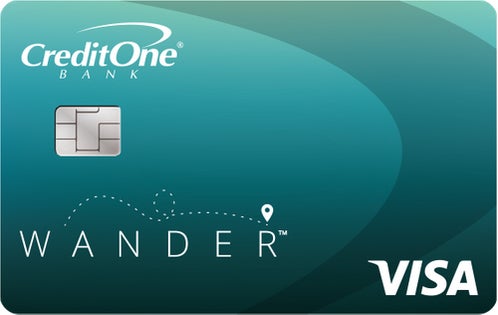
This is one of the only travel cards accessible to people with fair credit. It also offers a high rewards rate on a great mix of travel spending, including gas, airfare, hotels, resorts and bookings made through travel agencies. This will be especially appealing if you prefer booking directly with airlines and hotels to maximize loyalty rewards and elite status.
- People with fair-to-excellent credit can earn high rewards on eligible travel and everyday purchases like dining and gas.
- Frequent travelers can earn generous rewards even while working toward elite status with airline and hotel loyalty programs.
- It offers fewer perks compared to other mid-level travel cards with a similar annual fee and high variable APR.
- Points aren’t transferable and remain fixed at a value of 1 cent each when redeemed for cash back, which could prove limiting for frequent travelers who know how to maximize points for greater value.
This could be a top pick for travelers who struggle to qualify for cards with more travel perks and transfer partners.
- Earn 10x points on eligible hotels and car rentals booked through the Credit One Bank travel partner site
- Earn 5x points on eligible travel, dining, and gas
- Earn 1x points on all other purchases
- Redeem your reward points for statement credits, gift cards, merchandise, flights, hotels, and more
- With $0 Fraud Liability, you won’t be responsible for unauthorized charges
- Free Online Credit Score and Credit Report summary, terms apply
- If you are a Covered Borrower under the Military Lending Act, you may get a different offer
- See Rates & Fees
Discover it® Miles
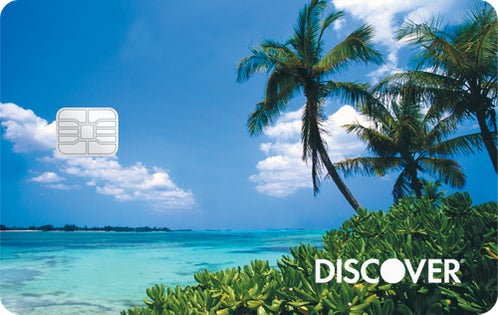
For a no-annual-fee card, Discover offers simplicity. You’ll be able to earn unlimited miles and have flexible redemption options like statement credits towards travel purchases or as cash deposits into your bank account. Plus, cardholders have a unique opportunity at the end of their first year when Discover will match every mile you earn.
- Appealing welcome offer that can essentially double all the miles earned at the end of the first year
- Competitive redemption value for cash back at 1 cent per mile
- Rewards earning potential takes a significant hit after your first year
- Can’t transfer miles to airline frequent-flyer programs
The Discover it® Miles card offers an impressive list of high-end travel perks and a generous first-year welcome offer for travel credit card newbies, but earning benefits drop off substantially after the first 12 months.
- Unlimited Bonus: Unlimited Mile-for-Mile match for all new cardmembers - only from Discover. Discover gives you an unlimited match of all the Miles you’ve earned at the end of your first year. For example, if you earn 35,000 Miles, you get 70,000 Miles. There’s no signing up, no minimum spending or maximum rewards. Just a Miles-for-Miles match.
- Automatically earn unlimited 1.5x Miles on every dollar of every purchase
- No annual fee
- Turn Miles into cash. Or redeem as a statement credit for your travel purchases like airfare, hotels, rideshares, gas stations, restaurants and more.
- 0% intro APR for 15 months on purchases. Then 17.24% - 28.24% Standard Variable Purchase APR will apply.
- Discover could help you reduce exposure of your personal information online by helping you remove it from select people-search sites that could sell your data. It’s free, activate with the mobile app.
- Discover is accepted nationwide by 99% of the places that take credit cards.
- Terms and conditions apply.
Wells Fargo Autograph℠ Card
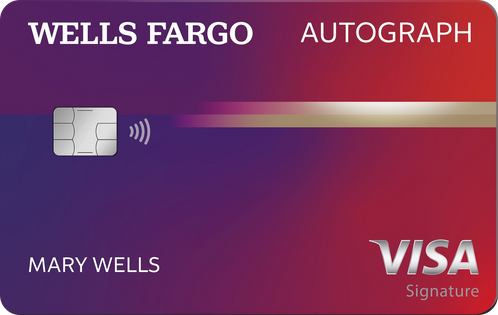
It offers one of the best rewards rates you can get on everyday travel – including airfare, hotels, gas stations and transit – without paying an annual fee. And since it also rewards dining (another key everyday spending category), it makes for a terrific standalone rewards card.
- It has no annual fee and a high rewards rate for everyday spending categories.
- It earns bonus rewards in common spending categories like gas stations and restaurants as well as in harder-to-find categories like phone plans, making it an especially versatile option.
- Though the card earns bonus rewards in a great mix of everyday categories, it offers a lackluster rate on grocery purchases, which could limit its standalone value.
- Unlike some competing no-annual-fee travel cards, the Autograph doesn’t let you transfer points to airline or hotel loyalty programs, limiting the potential value of your rewards.
This card could be a great fit for occasional travelers who want to earn rewards on everyday spending and have the flexibility to redeem for cash back.
- Select "Apply Now" to take advantage of this specific offer and learn more about product features, terms and conditions.
- Earn 20,000 bonus points when you spend $1,000 in purchases in the first 3 months - that's a $200 cash redemption value.
- Earn unlimited 3X points on the things that really add up - like restaurants, travel, gas stations, transit, popular streaming services, and phone plans. Plus, earn 1X points on other purchases.
- $0 annual fee.
- 0% intro APR for 12 months from account opening on purchases. 20.24%, 25.24%, or 29.99% variable APR thereafter.
- Up to $600 of cell phone protection against damage or theft. Subject to a $25 deductible.
- Redeem your rewards points for travel, gift cards, or statement credits. Or shop at millions of online stores and redeem your rewards when you check out with PayPal.
- Find tickets to top sports and entertainment events, book travel, make dinner reservations and more with your complimentary 24/7 Visa Signature® Concierge.
Southwest Rapid Rewards® Plus Credit Card

The Southwest Rapid Rewards® Plus credit card is ideally suited for entry-level travelers. Even if you only fly occasionally with Southwest airlines, you can easily boost rewards and receive a generous welcome offer. The perks for this card rival those found in higher-tier cards, such as getting the first two checked bags for free and two EarlyBird Check-In® each year.
- Can almost cover the annual fee with 3,000-point anniversary bonus
- Valuable perks on a domestic airline with a reputation for being customer-friendly
- Does not include certain perks often found with travel cards, such as priority boarding or a fast track to elite status
- Lacks airline partners and international travel options
For those already integrated into the Southwest ecosystem, this card offers generous bonus opportunities and access to unique, customer-friendly perks for a reasonable annual fee.
- Earn 50,000 bonus points after spending $1,000 on purchases in the first 3 months from account opening.
- 3,000 anniversary points each year.
- Earn 2X points on Southwest® purchases.
- Earn 2X points on local transit and commuting, including rideshare.
- Earn 2X points on internet, cable, and phone services; select streaming.
- 2 EarlyBird Check-In® each year.
- Earn 1 point for every $1 spent on all other purchases.
Bank of America® Premium Rewards® credit card
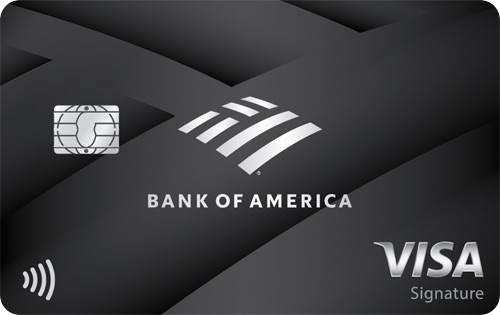
This card from Bank of America offers great value for a $95 annual fee card, especially if you already bank with them. If you are a Bank of America Preferred Rewards® member, you’ll be rewarded with an additional 25 percent to 75 percent redemption bonus on all your earnings.
In addition, this card offers some of the strongest travel insurance benefits you can get, up to a $100 annual statement credit that you can use for airline incidental expenses, an application fee credit for TSA PreCheck or Global Entry, and a points program that rewards spending in a variety of categories.
- The $100 annual statement credit you can use towards airline expenses and the application fee credit for TSA PreCheck or Global Entry more than offset the $95 annual fee.
- Preferred Rewards members receive some of the highest rewards rates among any travel or cash back credit cards.
- If you’re not a Preferred Rewards member, the benefits of the card are not as robust compared to other cards with similar annual fees.
- The $100 airline incidental credit only covers qualifying incidentals and not actual flight costs.
The Bank of America Premium Rewards credit card combines the benefits of a cash back card and premium travel card and is an especially good value for those with existing Bank of America accounts.
- Receive 60,000 online bonus points - a $600 value - after you make at least $4,000 in purchases in the first 90 days of account opening.
- Earn unlimited 2 points for every $1 spent on travel and dining purchases and unlimited 1.5 points for every $1 spent on all other purchases. No limit to the points you can earn and your points don't expire as long as your account remains open.
- If you're a Bank of America Preferred Rewards® member, you can earn 25%-75% more points on every purchase. That means you could earn 2.5-3.5 points on travel and dining purchases and 1.87-2.62 points on all other purchases, for every $1 you spend.
- Redeem for cash back as a statement credit, deposit into eligible Bank of America® accounts, credit to eligible Merrill® accounts, or gift cards or purchases at the Bank of America Travel Center.
- Get up to $100 in Airline Incidental Statement Credits annually and TSA PreCheck®/Global Entry Statement Credits of up to $100, every four years.
- Travel Insurance protections to assist with trip delays, cancellations and interruptions, baggage delays and lost luggage.
- No foreign transaction fees.
- Low $95 annual fee.
Chase Sapphire Reserve®

For those looking for a premium credit card with generous travel perks and a top-tier sign-up bonus, the Chase Sapphire Reserve is considered to be one of the best options on the market. And with no blackout dates, expiration dates for points or point limits, the card offers major redemption flexibility.
The sign-up bonus is worth a whopping $900 toward travel when you redeem through Chase Travel℠ after spending $4,000 on purchases in the first three months, so you are getting more than a cent per mile value. With the $300 annual credit for travel purchases, generous earning structure and impressive list of additional perks, seasoned travelers have plenty of opportunity to offset the steep $550 annual fee.
- Wealth of travel perks and rewards categories
- Increase your point value by 50% by redeeming them for travel through Chase Travel℠
- Required spend of $300 on travel annually before travel category rewards rates apply
- Lower rewards value for merchandise
While the price of admission for Chase’s premium travel card is steep, the bonuses and wealth of luxury travel perks will be worth it in the long run for experienced travelers.
- Earn 60,000 bonus points after you spend $4,000 on purchases in the first 3 months from account opening. That's $900 toward travel when you redeem through Chase Travel℠.
- $300 Annual Travel Credit as reimbursement for travel purchases charged to your card each account anniversary year.
- Earn 5x total points on flights and 10x total points on hotels and car rentals when you purchase travel through Chase Travel℠ immediately after the first $300 is spent on travel purchases annually. Earn 3x points on other travel and dining & 1 point per $1 spent on all other purchases
- Get 50% more value when you redeem your points for travel through Chase Travel℠. For example, 60,000 points are worth $900 toward travel.
- 1:1 point transfer to leading airline and hotel loyalty programs
- Access to 1,300+ airport lounges worldwide after an easy, one-time enrollment in Priority Pass™ Select and up to $100 application fee credit every four years for Global Entry, NEXUS, or TSA PreCheck®
- Count on Trip Cancellation/Interruption Insurance, Auto Rental Collision Damage Waiver, Lost Luggage Insurance and more
United Quest℠ Card
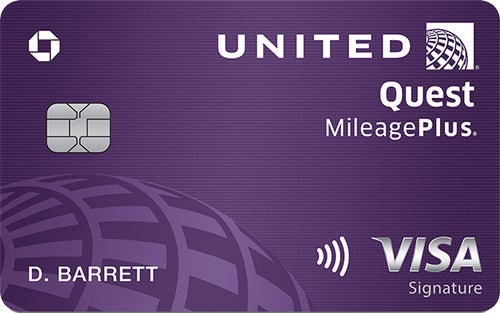
If you like to regularly travel on United Airlines (or their partner airlines) then this card is worth a look. Not only do you earn enhanced bonus miles for United purchases, other travel and select everyday purchases, you also get an impressive amount of airline-specific perks. This includes anniversary credits and free first and second checked bags for you and one companion.
- Impressive sign-up bonus and anniversary credits
- Easy to earn miles with popular bonus categories like dining and select streaming purchases
- High annual fee for infrequent United flyers
- No airport lounge access
The United Quest Card is a terrific option for semi-frequent United travelers, but cardholders should plan to redeem United miles at least twice a year to take full advantage and offset the annual fee.
- Earn 60,000 bonus miles and 500 PQP after qualifying purchases
- Earn 3 miles per $1 spent on United® purchases
- Earn 2 miles per $1 spent on all other travel, dining and select streaming services
- Earn 1 mile per $1 spent on all other purchases
- Free first and second checked bags - a savings of up to $320 per roundtrip (terms apply) - and priority boarding
- Up to a $125 United® purchase credit and up to 10,000 miles in award flight credits each year (terms apply)
- Earn up to 6,000 Premier qualifying points (25 PQP for every $500 you spend on purchases)
The information about the Marriott Bonvoy Boundless Credit Card, the American Airlines AAdvantage® MileUp® Card, the American Express® Green Card and the Southwest Rapid Rewards Premier Credit Card has been collected independently by CreditCards.com and has not been reviewed by the issuer.
Eligibility and Benefit level varies by Card. Terms, Conditions and Limitations Apply. Please visit americanexpress.com/benefitsguide for more details. Underwritten by Amex Assurance Company.
For Capital One products listed on this page, some of the above benefits are provided by Visa® or Mastercard® and may vary by product. See the respective Guide to Benefits for details, as terms and exclusions apply.
Comparing the best travel credit cards of 2024
Editor’s picks: best travel credit card details, best welcome bonus: chase sapphire preferred® card.
- Best features : This card packs in plenty of value that is rare for only $95 a year. It comes with a high sign-up bonus, generous rewards program and competitive redemption values.
- Biggest drawbacks : You may need to look beyond the Chase Sapphire Preferred if you prefer luxury features like TSA PreCheck, priority boarding, travel credits and lounge access.
- Alternatives: The Citi Premier® Card has a similar annual fee and a generous welcome offer too. Travelers who want to book travel outside of credit card portals and who spend a lot on gas and in-store grocery purchases may get better value out of the Premier card.
- Bottom line : A modest annual fee, impressive sign-up bonus and ultra-flexible rewards redemption give this card great short- and long-term value for travelers who don’t need a ton of luxury perks.
Read our Chase Sapphire Preferred Card review or jump back to this card’s offer details .
Best for flat-rate rewards: Capital One Venture Rewards Credit Card
- Best features : For a reasonable annual fee, this popular Capital One credit card offers standout rewards with an easy rewards structure and versatile redemption options. You can transfer miles to over 15 loyalty programs or redeem for statement credit toward travel.
- Biggest drawbacks : Capital One doesn’t have many domestic travel transfer partners. This can make it harder to maximize the value of your miles when booking domestic flights.
- Alternatives : If you’re looking to earn at a flat-rate but aren’t too pleased with the Venture card’s $95 annual fee ( See Rates and Fees ), the Capital One VentureOne Rewards Credit Card is a suitable alternative. Although cardholders only earn 1.25X miles on all purchases, the card still comes with a sign-up bonus of 20,000 miles for spending $500 in the first three months. This is a smaller bonus and a lower rewards rate than the Venture card, but it’ll also be easier to obtain, making this an ideal option for modest spenders.
- Bottom line : This card is a great option if you’re looking for an easy way to earn high travel rewards on all purchases. But if you’re after top-drawer travel perks, you may want to look elsewhere.
Read our Capital One Venture Rewards Credit Card review or jump back to this card’s offer details .
Best for luxury travel: The Platinum Card® from American Express
- Best features : This premium card comes fully-loaded. You can enjoy luxury lounge access, elite status with Hilton Honors and Marriott Bonvoy hotels (upon enrollment) and even travel consultants to help plan your trip. A laundry list of travel credits can also help offset the card’s annual fee.
- Biggest drawbacks : The card only earns bonus rewards on flights and prepaid hotels. You might earn more with cards that offer bonus points or miles on both travel and everyday essentials. Plus, some of the credits – like the card’s luxury fitness credit or Walmart+ credit – don’t have broad appeal, making it harder to offset the high $695 annual fee.
- Alternatives : Unlike the Platinum card, the American Express® Gold Card lets you earn high bonus rewards for purchases made in categories beyond travel, including restaurant and U.S. supermarket purchases. It also comes with a lot of the same benefits as the Platinum card, such as car rental insurance, purchase protection and Hotel Collection benefits, all for a much smaller $250 annual fee.
- Bottom line : If you can take advantage of its many perks, this card should tick all the right boxes for big spenders and frequent travelers looking for luxury travel perks, particularly complimentary airport lounge access.
Read our American Express Platinum Card review or jump back to this card’s offer details .
Best for foodies: American Express® Gold Card
- Best features : Traveling foodies, rejoice – this card offers an industry-leading 4X points at restaurants, including takeout and delivery in the U.S. You’ll also earn 4X points at U.S. supermarkets (on up to $25,000 per calendar year, then one point per dollar) and 3X points on flights booked directly with airlines or AmexTravel.com. Trips with common carriers that are booked with your Gold card are covered for baggage insurance worth up to $1,250 for carry-on bags and $500 for checked bags.
- Biggest drawbacks : The annual fee is $250, pricier than other travel rewards cards with mid-level travel perks. And unless food is a significant portion of your spending, the card’s rewards rate and food delivery credits may not be the best fit.
- Alternatives : The Citi Premier® Card comes close to matching the Amex Gold with its rewards rates, but its annual fee is much lower (just $95).
- Bottom line : If you’re a frequent traveler who makes dining out a staple of their vacations and staycations, you’ll get a lot of value with this card.
Read our American Express Gold Card review or jump back to this card’s offer details .
Best first travel card: Capital One VentureOne Rewards Credit Card
- Best features : The VentureOne card is a basic travel card for beginners who want to earn flexible rewards but aren’t ready to commit to an annual fee ( See Rates and Fees ). VentureOne cardholders can earn bonus miles on hotels and rental cars booked through Capital One Travel and 1.25X miles on every other purchase. You can transfer these miles to numerous airline and hotel partners.
- Biggest drawbacks : Other no-annual-fee travel cards offer better perks and higher rewards rates than the VentureOne’s 1.25X miles.
- Alternatives : The Bilt Mastercard® is a unique no-annual-fee card that earns points on rent payments without the processing fees. But the card is also a great beginner travel card, offering bonus rewards on travel and dining (points are transferable too). Plus, if you wait until the first of the month, your patience will be rewarded with double points on all non-rent purchases for 24 hours (on up to 10,000 bonus points). That’s a whopping 6X points on dining, 4X points on travel and 2X points on all other non-rent purchases. You must use the card 5 times each statement period to earn points.
- Bottom line : Budget-friendly travelers can get a decent amount of value out of this starter travel card, but if transferring rewards to travel partners isn’t a priority for you, a flat-rate cash back card may be more lucrative.
Read our Capital One VentureOne Rewards Credit Card review or jump back to this card’s offer details .
Best for occasional travelers: Bank of America® Travel Rewards credit card
- Best features : This card will appeal to infrequent travelers who don’t typically book through travel portals. Instead, you can redeem your points for any travel and dining purchases made on your credit card within the last 12 months. And if you’re a Preferred Rewards member, you can earn up to 25% to 75% more points on every purchase.
- Biggest drawbacks : The best rewards are reserved for Bank of America customers with savings or investment accounts. If that’s not you, you can likely find another card that rewards your travel purchases at a higher rate.
- Alternatives : The Capital One VentureOne also does not charge an annual fee or foreign transaction fee ( See Rates and Fees ), but even casual travelers can benefit from its valuable purchase and travel protections.
- Bottom line : The Bank of America Travel Rewards card is a solid choice for occasional travelers focused on earning some rewards and avoiding an annual fee.
Related : Is the Bank of America Travel Rewards card worth it?
Read our Bank of America Travel Rewards credit card review or jump back to this card’s offer details .
Best for everyday spending: Citi Premier® Card
- Best features : For a modest annual fee, cardholders earn 3X points, not only on air travel, hotels and dining but also supermarket and gas station purchases, two of the most popular everyday spending categories. Plus, for a limited time, earn a total of 10X points per $1 spent on hotel, car rentals and attractions (excluding air travel) booked on the Citi Travel portal through June 30, 2024. Its sign-up bonus is on par with competitor offers, and cardholders get an annual hotel credit, making it easier to offset the card’s annual fee.
- Biggest drawbacks : If you want to transfer your points to get more value out of your rewards, JetBlue is the only domestic carrier on Citi’s list of airline partners, which can make it harder to book domestic travel.
- Alternatives : The Chase Sapphire Preferred is similar but may be a more attractive option due to its travel protection coverage. Plus, Chase’s Travel℠ program includes a robust list of airlines and hotel partners.
- Bottom line : Someone looking to earn rewards on travel and everyday expenses will appreciate the versatility of the Citi Premier Card, not to mention its generous welcome bonus.
Read our Citi Premier Card review or jump back to this card’s offer details .

Best for annual credits: Capital One Venture X Rewards Credit Card
- Best features : Cardholders can take advantage of this card’s yearly credits to help offset its annual fee and enjoy additional perks like lounge access. And when you book through Capital One Travel, you’ll earn some of the highest rewards available for hotels, rental cars and flights.
- Biggest drawbacks : You’ll have to book your travel through Capital One Travel instead of directly through an airline or hotel to get the best value out of this card.
- Alternatives: The Platinum Card® from American Express is one of the best travel cards for lounge access and other luxury perks. Frequent travelers who can take advantage of all those perks can easily offset the card’s high annual fee.
- Bottom line : The Venture X should appeal to both frequent travelers who want to earn more than just 1 mile per dollar on all non-travel purchases and luxury travelers who want to enjoy premium travel without paying the typical sky-high annual fees.
Read our Capital One Venture X Rewards Credit Card review or jump back to this card’s offer details .
Best for pairing with Chase cards: Chase Freedom Unlimited®
- Best features: Its 1.5% rate on general purchases makes it a great catch-all card as part of your overall travel rewards strategy. You can use this card with certain Chase cards to get more Chase Ultimate Rewards points, one of the most valuable credit card points.
- Biggest drawbacks: It has a 3% foreign transaction fee, so if you were planning to use this card abroad on your travels, it can be more costly.
- Alternative(s): The Chase Sapphire Preferred Card is one of Chase’s premium travel cards, with solid earning rates on dining and travel. For a modest $95 annual fee, it comes with top-of-the-line travel benefits, increases points redemption value through the Chase travel portal and can transfer points to Chase travel partners.
- Bottom line: If you already have a Chase travel card — or are planning to get one in the future — this card is a must-have for maximizing travel rewards.
Read our full Chase Freedom Unlimited® review or jump back to this card’s offer details .
Best for fair credit: Credit One Bank Wander® Card
- Best features : Even people with fair credit can take advantage of the card’s bonus rewards in a variety of travel categories. Many travel cards only earn generous bonus rewards for airline or hotel purchases or for travel booked through the issuer’s travel portal. But the Wander card is more flexible, giving you more freedom to book travel the way you like.
- Biggest drawbacks : There are no transfer partners, so your points are worth a maximum of 1 cent each. Plus, the card has fewer perks compared to other mid-level cards with a similar annual fee.
- Alternatives : Your options are limited if you’re looking for another travel card open to people with fair credit. But many Capital One cards like the Capital One Walmart Rewards® Mastercard® or the Capital One QuicksilverOne Cash Rewards Credit Card could help you rack up a lot of rewards that you can use to help cover the cost of travel. You can also take advantage of convenient and cost-saving features found in the Capital One Travel Portal.
- Bottom line : This card is a solid pick for credit-builders who also want to earn travel rewards.
Read our Credit One Bank Wander® Card review or jump back to this card’s offer details .
Best for no annual fee: Discover it® Miles
- Best features : The Discover it® Miles offers simplicity and flexibility without the annual fee. All purchases earn a fairly average 1.5X miles. But Discover sweetens the deal by matching all the miles you’ve earned at the end of your first year. Instead of travel, you can also redeem rewards online with Amazon or when you pay with PayPal (though redemption value might be lower).
- Alternatives : The Capital One VentureOne Rewards Credit Card is another solid no-annual-fee travel card ( See Rates and Fees ). It not only offers a flat rate of 1.25X miles on every purchase, but also 5X miles on hotels and rental cars booked through Capital One Travel. That could make it easier for frequent travelers to earn rewards. It also has a number of travel and consumer protections that you won’t find with most entry-level travel cards, including the Discover it ® Miles.
- Bottom line : This card skips the annual fee and the generous first-year welcome offer is ideal for budget-friendly travelers or someone looking for their first travel credit card.
Read our Discover it ® Miles review or jump back to this card’s offer details .
Best for gas and transit: Wells Fargo Autograph℠ Card
- Best features: This card’s mix of bonus categories should be a terrific fit if you’re looking for a low-cost way to earn rewards on both everyday travel and big trips. You’ll earn rewards at a great rate on everything from gas and transit to airfare and hotels, without worrying about maximizing point values or offsetting an annual fee.
- Biggest drawbacks: Its list of perks is just okay, even for a no-annual-fee travel card. You’ll miss out not only on benefits like expedited security screening and lounge access, but also the ability to transfer points to airline and hotel loyalty programs.
- Alternatives: Though it may earn rewards at a lower rate, the Capital One VentureOne Rewards Credit Card could be a great alternative. Its streamlined, flat-rate rewards program is a great fit if you’re new to earning miles, and the card gives you the flexibility to transfer miles to Capital One airline and hotel partners, which could boost their redemption value.
- Bottom line: The Autograph card is a great option if you want to earn rewards on everyday travel and need the flexibility to redeem for both travel and cash back.
Read our Wells Fargo Autograph℠ Card review or jump back to this card’s offer details .
Best for budget flyers: Southwest Rapid Rewards® Plus Credit Card
- Best features : This entry-level airline card has some of the same popular features as more expensive Southwest consumer travel cards, including a chance to earn the Southwest Companion Pass® – one of the most coveted perks in all of travel rewards. If you earn 135,000 points in a year, you can pick a companion to fly with you for free (except for taxes and fees) for up to two years on any Southwest flight that you purchase with cash or points.
- Biggest drawbacks : Unlike some other airline cards, this no-frills card doesn’t earn bonus points in popular everyday categories like gas or grocery stores. Plus, the card’s anniversary bonus of 3,000 points is lower than the Southwest Rapid Rewards® Premier Credit Card’s bonus.
- Alternatives : The Delta SkyMiles® Gold American Express Card may be a better fit for budget travelers. It comes with a $0 intro annual fee for the first year (then $150) and a chance to earn bonus miles faster thanks to practical bonus categories including restaurants and U.S. supermarkets. It also has a number of convenient features like priority boarding and a chance to earn a $200 Delta flight credit. Plus, Delta and its partner network are much more extensive than Southwest.
- Bottom line : The Rapid Rewards Plus card is a decent choice for occasional Southwest flyers looking for a cheap rewards travel card. But if you fly Southwest frequently and want to double your anniversary points while avoiding foreign transaction fees, consider upgrading to the Southwest Rapid Rewards® Premier Credit Card and its higher annual fee of $99.
Read our Southwest Rapid Rewards Plus Credit Card review or jump back to this card’s offer details .
Best for travel credits: Bank of America® Premium Rewards® credit card
- Best features : Along with perks like an annual credit up to $100 for airline incidentals, which includes seat upgrades and airline lounge fees, this card offers a credit of up to $100 to cover the cost of a TSA Precheck or Global Entry application. That perk isn’t always included on travel cards at the $95-annual-fee level. You can also redeem for cash back as a deposit into Bank of America® checking or savings accounts or for gift cards and purchases at the Bank of America Travel Center.
- Biggest drawbacks : Unlike many travel rewards cards with an annual fee, this card doesn’t let you transfer rewards to partner airline or hotel loyalty programs to squeeze more value out of your points. Plus, the card’s best rewards rates are reserved for people with large savings or investment accounts with Bank of America.
- Alternatives: The Chase Sapphire Preferred card has greater flexibility for travelers who want to transfer their points to airline or hotel travel partners. It also comes with better redemption value if you book travel through the Chase Travel℠ portal and travel protections.
- Bottom line : This card could be a good fit for heavy packers who can take advantage of the airline incidental fee credits or people who already have a Bank of America account. Those who are loyal to one airline or don’t bank with Bank of America may not find much value in this card.
Read our Bank of America Premium Rewards credit card review or jump back to this card’s offer details .
Best for point value: Chase Sapphire Reserve®
- Best features : This top-of-the-line card comes with a wealth of travel perks, including a sign-up bonus worth $900 when redeemed through Chase Travel℠ (60,000 points after spending $4,000 in the first three months). In addition to the $300 travel credit, you can try out services like Instacart+ and DashPass for free for one year.
- Biggest drawbacks : Despite the annual credit and elevated bonus categories, the card’s $550 annual fee might be challenging to offset every year.
- Alternatives : If you’re looking for a card with annual credits and luxury lounge access, The Platinum Card® from American Express offers a wider network but carries a slightly higher annual fee of $695.
- Bottom line : Frequent travelers who can take full advantage of the Sapphire Reserve card’s perks and bonus categories can also enjoy the card’s boosted value on travel redemptions.
Related : Chase Sapphire Preferred vs. Ch ase Sapphire Reserve
Read our Chase Sapphire Reserve review or jump back to this card’s offer details .
Best for United MileagePlus members: United Quest℠ Card
- Best features : Even semi-frequent United flyers can come out ahead with this mid-tier airline credit card, thanks to all the ways the card’s perks can offset its $250 annual fee. That includes multiple anniversary credits, priority boarding, checked baggage fee waivers and the up to $100 credit for TSA Precheck or Global Entry application fee.
- Biggest drawbacks : Unlike other airline cards with a high annual fee, the United Quest doesn’t offer complimentary lounge access. Plus, the sign-up bonus has a high spend requirement: You’ll need to spend $4,000 in the first three months to earn the sign-up bonus of 60,000 miles plus 500 Premier Qualifying Points.
- Alternatives : If the annual fee doesn’t fit your budget, the United℠ Explorer Card is worth a look since it has a $0 intro annual fee (then $95 annually), but still carries a generous sign-up bonus, priority boarding, purchase and travel protections and an up to $100 credit for TSA Precheck or Global Entry application fee.
- Bottom line : The United Quest Card packs in a lot of perks and value, making it a solid pick for loyal United travelers looking for an enhanced travel experience.
Read our United Quest℠ Card review or jump back to this card’s offer details .
Best hotel credit card: Marriott Bonvoy Boundless® Credit Card
- Best features : This card offers great long-term value for frequent travelers who stay at the world’s largest hotel chain a few nights or more per year. You get plenty of chances to offset the $95 annual fee, including a free night every year after your account anniversary (up to 35,000 points) and a high rewards rate in the popular, practical bonus categories of travel, grocery, gas and dining purchases, as well as a flat rate of 2X points on all other eligible purchases.
- Biggest drawbacks : You can only use your rewards with Marriott hotels. So if you don’t frequent the brand, you’ll be better served by a different hotel credit card or a general-purpose travel rewards card, which offers greater flexibility in how you redeem your rewards.
- Alternatives : If you’re not loyal to one hotel chain, the Chase Sapphire Preferred should give you more redemption options. It earns bonus points on travel, dining and select online grocery purchases – points that can be redeemed in a variety of ways, including for travel, or transferred to one of Chase’s airline or hotel partners. And when you redeem for travel through the Chase Travel℠ portal, your points have 25% more value.
- Bottom line : Travelers who stay at Marriott frequently enough to offset the $95 annual fee will appreciate this card. But depending on your spending habits and the hotel features that matter most to you, you may get greater value with another Marriott card .
Read our Marriott Bonvoy Boundless Credit Card review .
Best no annual fee airline card: American Airlines AAdvantage® MileUp® Card
- Best features : This no-annual-fee airline card gives households a chance to earn miles on more than just travel. You’ll earn 2X miles not only on eligible American Airlines purchases, but also at grocery stores, which increases the card’s earning potential for the average consumer. The MileUp card also has a low spend threshold for its sign-up bonus: Spend just $500 in your first three months and you’ll earn 10,000 miles and a $50 statement credit.
- Biggest drawbacks : This card lacks a number of cost-saving perks found with other airline cards, including a free first checked bag for you and additional passengers and a chance to earn travel credits for your spending. Depending on how often you fly and how many people you travel with, you could actually save more money with a travel card that charges an annual fee.
- Alternatives : The Delta SkyMiles® Gold American Express Card has a similar rewards rate and charges no annual fee for the first year, then $150 thereafter. That gives you time to test out perks you won’t find with the MileUp card, like priority boarding, a first checked bag free for you and eight additional passengers and a chance to earn a $200 flight credit after spending $10,000 in a calendar year.
- Bottom line : This card is worth a look if you’re loyal to American Airlines but only fly occasionally and are looking for a no-annual-fee credit card . But if you want the flexibility to fly with different carriers while still earning high rewards, you may get better value out of a general-purpose travel rewards card.
Read our American Airlines AAdvantage MileUp review .
How do travel credit cards work?
Travel rewards credit cards let you earn points or miles you can redeem for travel purchases. Some offer a flat rate on general purchases, but many offer bonus rewards for typical travel purchases or everyday spending categories, like restaurants, gas or even groceries.
Earning points or miles is usually as easy as swiping your card, and some cards provide limited-time offers and sign-up bonuses to add more incentives. The basics of points and miles cards are pretty much the same. You earn and accumulate rewards by making purchases with your card, and redeem for a discount on your next trip.
Your redemption options will vary by card. Most require that you redeem points or miles for travel purchases. (Some let you redeem for gift cards or cash back, but it might be at a lower value.) You can typically redeem points or miles by booking future trips through a designated portal, like Amextravel.com or Chase Ultimate Rewards, or transferring rewards to an issuer’s travel partners to book flights or hotel stays. Some allow you to redeem for a statement credit on travel purchases made within a certain time frame.
Your redemption options will vary by card. Typical options include:
- Booking new travel
- Transferring points or miles to a travel partner
- Statement credit for past travel purchases
Redeeming for travel often yields the best value, while non-travel options like gift cards might have a lower redemption value. You can typically redeem points or miles by booking future trips through a designated portal, like Amextravel.com or Chase Ultimate Rewards, though some let you redeem directly with the airline or third-party travel agency.
General travel credit cards + –
General travel or general-purpose credit cards aren’t tied to or co-branded with a particular airline or hotel. They are best for any traveler who values flexibility in how they earn and redeem rewards.
Depending on the card, you can earn higher points not only on travel-related purchases, but also in popular categories like groceries, gas and dining. You can redeem the points you earn in many different ways, like statement credits and travel. A 1-cent-per-point value is typical, but points may be worth less when used for non-travel options or more if transferred to the right travel partner.
Transferring your points over to an airline or hotel loyalty program can help you strategize so you can get the most out of your points. However, average point values vary from program to program, so you’ll need to test out different routes and carriers to see how far your points can take you before you transfer points between loyalty programs.
Some of the most popular rewards programs for general travel credit cards include:
- American Express Membership Rewards
- Chase Ultimate Rewards
- Capital One Travel
- Citi ThankYou Points
Is a general travel credit card worth it?
Co-branded cards usually feature high-value airline or hotel perks. Examples like automatic hotel elite status, companion passes or free checked bags could be worth hundreds or even thousands of dollars.
But general travel cards give you more flexibility to choose how you travel and where you stay. Plus, plenty of general travel cards come loaded with valuable benefits not tied to specific airlines and hotels — especially if you’re willing to pay an annual fee.
Most general travel cards carry higher rewards rates compared to airline cards with similar annual fees, which gives you a chance to earn more rewards faster. And you’ll have a number of redemption options that make each of your points worth at least 1 cent, which is worth more than the rewards you’ll earn with most hotel rewards programs and some airline rewards programs.
Here’s a look at some of the top features your general travel card may offer:
- Annual travel credits : Premium cards like the Capital One Venture X and Chase Sapphire Reserve reward cardmembers with annual travel credits worth hundreds of dollars, which you can use to offset previous travel costs or book new travel through the card’s travel portal.
- Airport lounge access : A number of mid-level and premium travel cards offer discounted or complimentary airport lounge access for you and your guests. Users can enjoy amenities like complimentary food and drinks, showers or even spa treatments. Popular airport lounge networks include Priority Pass lounges and the exclusive American Express Global Lounge Collection.
- Luxury hotel benefits : Your card issuer may offer Visa or Mastercard’s luxury hotel collection benefit. This perk can lead to room upgrades, free breakfast, food or beverage credits and late check-out. This is typically offered with credit cards with Visa Signature or Infinite benefits or cards with Mastercard World or World Elite benefits, though you’ll have to check with your card issuer to be certain.
- Car rental elite status : With the right general travel rewards card, you can not only rent a car but also get discounts and status upgrades that let you skip the lines when renting and returning, as well as vehicle upgrades based on availability and other exclusive perks.
Airline travel credit cards + –
Airline credit cards are co-branded cards that carry the name of the card issuer and a particular airline. They’re a great fit for travelers who regularly fly with a particular airline and can take advantage of the perks found within its rewards program.
Some of the most popular airline rewards programs include:
- Alaska Airlines Mileage Plan
- American Airlines Aadvantage
- Southwest Rapid Rewards
- Delta SkyMiles
- United MileagePlus
Like general travel cards, airline rewards cards can earn rewards on a variety of purchases, but your redemption options are more limited. To get the best value, you’ll typically want to redeem your rewards for flights with the airline or one of its partners.
Is an airline credit card worth it?
They offer less flexibility and might have an annual fee, but airline cards can make your travel experience easier and save you a lot of money, even after you factor in the cost of an annual fee.
Here’s a look at some of the top airline credit card benefits:
- Free checked bags : Avoid paying a fee for your first checked bag and a travel companion’s bag. Many airlines charge $30 to $35 per checked bag, per trip, so the savings can add up, especially if you’re traveling with a large family.
- Fast track to elite airline status : Frequent flyers looking for an enhanced flying experience will have to spend thousands of dollars and spend a lot of time in the air to unlock the top-of-the-line perks that come with elite status. But the right airline credit card can cut down on the eligibility requirements and may even come with automatic elite status or welcome offers and additional credits that get you elite status faster.
- Travel companion pass : Earning an airline companion pass takes some work, but if you qualify you can bring a passenger along on a future flight for free (though you’ll still have to pay taxes and fees). Some airlines even offer companion passes that let you bring a guest with you on any flight you book for a year or more.
- Priority boarding : This perk helps you quickly board a plane and get your carry-on stowed away in an overhead bin before it fills up.
- In-flight discounts : This perk helps you save on drinks, snacks and other extras purchased on your flight. You’ll typically enjoy a discount of 20% to 25% off.
How to choose an airline
It’s best to select a card co-branded with an airline that you will use frequently, which typically means choosing an airline that flies out of an airport close to where you live, or one that you use the most. Smaller hubs may have limited options, but you should check to make sure that the airline you want has routes at your preferred airport. For example, Southwest does not fly out of Newark Airport, so if Newark is your primary airport another co-branded airline card might be a better fit.
Hotel travel credit cards + –
Hotel credit cards are co-branded cards that earn points you can redeem for stays with a specific hotel chain. Some of the most popular hotel rewards programs include:
- Marriott Bonvoy
- Hilton Honors
- IHG One Rewards Club
- World of Hyatt
Is a hotel credit card worth it?
Like airline credit cards, hotel credit cards can pack in a lot of brand-specific perks to reward your loyalty. Some cards offer supersized rewards rates, typically for hotel-related purchases. These earning rates can make it easier to quickly rack up points for future visits.
On top of the high-earning potential, hotel travel cards may also come with some of the following benefits:
- Free night : Many hotel cards automatically reward you with a free night at select properties every year on your anniversary. Others give you a chance to earn a free night after you spend a certain amount on the card.
- Room upgrades : Your card could automatically qualify you for room upgrades when available, giving you more space or better views.
- Elite hotel status : Some of the best hotel cards come with automatic elite status, making you eligible for exclusive perks, while others put you on a fast track to achieve higher levels of elite status.
How to choose a hotel
While you should pick an airline card based on frequency and availability, choosing a hotel card might come down to personal preference. You’ll find most hotel chains concentrated in mid-to large-size cities, so you can select a hotel group that works best for your needs. Hotel chains often include a price range from luxury to budget friendly. For example, Marriott includes both Fairfield Inn & Suites and the Ritz-Carlton in its suite of hotels. So, whether you splurge on one trip or save costs on another, you can still earn rewards.
However, if you happen to travel a lot to very remote cities, you might want to ensure that your preferred hotel chain has a location there.
Business travel credit cards + –
Business travel cards are a terrific option if you own a company or work as a freelancer and travel often for work. They can be co-branded or a general travel card.
Some of the more popular business cards include:
- The Business Platinum Card® from American Express review
- Delta SkyMiles® Platinum Business American Express Card
- Southwest Rapid Rewards Premier Business Credit Card
Is a business travel card worth it?
Business travel cards offer a competitive rewards structure similar to other travel cards, but you can typically earn bonus rewards in business categories, like purchasing software and office supplies. Not only can business travel cards help keep your work and personal expenses separate, but they can also help you cut down on business costs.
You might see these benefits on a business travel card:
- Bonus rewards on large purchases : Some cards will offer an elevated rewards rate for big purchases, so you can earn miles or points for big-ticket items.
- No fee for employee cards : You can rack up even more points or miles when you add employees as authorized users at no additional cost. This action can also be a great way to track company spending.
- Account management tools: To help manage your company budget, business travel cards might come with apps or programs that could ease record keeping, like the ability to upload receipts quickly or link to a spreadsheet.
- Travel and hotel perks : Like other travel cards, you can often enjoy annual benefits, like a hotel reward night, lounge access or statement credits.
Co-branded travel cards versus general travel cards
The biggest difference between co-branded cards and general travel cards is flexibility. Co-branded cards are ideal for brand loyalists who prefer to commit to one particular airline or hotel group. They often come with perks that you might not find on general travel cards (like elite status or free checked bags), but how you earn and redeem rewards is limited to that specific brand.
For instance, you might feel locked in to book a pricier room with a co-branded hotel card even if there are more affordable options.
With general travel cards, you have more freedom to select flights or hotels that fit into your schedule and price range, but you might lose out on some perks. If you prefer flexibility, a general travel card might work better for you. If you enjoy more elite perks or are a fan of a particular brand, you might consider a co-branded card.
Pros and cons of travel credit cards
- Travel for less: Money-saving benefits, such as high travel reward rates, sign-up bonuses and travel credits, can help bring down the overall cost of travel.
- Generous perks: The best travel cards feature perks like room or seat upgrades, free hotel stays, statement credits and lounge access that might enhance your overall travel experience.
- Fast track to elite status: Elite status, which offers maximum program benefits for airlines or hotels, often takes time to earn. Some travel rewards cards help cut down on the qualification period, or they offer automatic elite status, which means you can start earning elite status benefits sooner.
- Earn points as a loyalty member along with rewards : If you are a loyalty member, then you can earn loyalty points with that hotel or airline brand as well as travel reward points when you book with a travel credit card.
- No foreign transaction fees : Most travel cards don’t charge a foreign transaction fee, which can help cut down costs when traveling abroad.
- Complex rewards programs: Keeping up with the travel rewards card program rules can be confusing, especially when redeeming or transferring points to a travel partner. It takes careful planning and calculation to ensure you are maximizing the value for your rewards.
- Limited redemption outside of travel: Travel cards typically provide the best value when redeeming for travel. While some cards offer redemptions for non-travel options, such as statement credits or gift cards, these are typically worth less.
- High annual fees: Determining whether an annual fee is worth it can be difficult, and many of the best travel credit cards have yearly costs starting from $95 to $100. Premier travel cards could have annual fees in the $200 to $700 range.
- Higher interest rates : Typically, travel cards carry a higher ongoing APR, so if you carry a balance every month, then a low-interest credit card or balance transfer card might be a better fit.
- Typically best only for frequent flyers : Since most travel cards offer the most elevated bonus rates for travel, such as flights, hotels and car rentals, you won’t reap its maximum benefits unless you fly often.
Who should get a travel credit card
- Frequent flyers . If you spend lots of time up in the air or staying at hotels, you can absolutely benefit from the rewards and perks that come with a travel credit card. But if you’re new to travel or only travel occasionally, look for no-annual-fee cards or ones with simple rewards categories. All globetrotters can appreciate the lack of foreign transaction fees many travel cards offer.
- Brand loyalists . Fans of particular airlines and hotel chains can reap some serious rewards with their go-to brands. Loyal customers can rack up an incredible amount of hotel points or flight miles using a card like the American Airlines AAdvantage MileUp or the Marriott Bonvoy Boundless.
- Luxury travelers . Vacationers looking for top-shelf travel perks may have to pay to carry their card, but The Platinum Card from American Express and the Chase Sapphire Reserve offer benefits that can easily offset their annual fees. You’ll find high-end earnings rates on your purchases to back it up. Take advantage of exclusive add-ons, like access to airport lounges, free checked bags, specialty offers and more.
- Road trippers . Some travel cards earn rewards on purchases at gas stations and hotel stays, which can be valuable if you’re on the road a lot. A hotel credit card like one in the Hilton Honors program or Marriott Bonvoy may be a great choice if you regularly take cross-country trips and stay at hotels.
Who should skip a travel credit card
- Fans of low-maintenance credit cards. While flat-rate travel cards are available, travel cards with fixed bonus categories or a tiered rewards structure often have the best rewards rates. The card that’s most fitting for you will depend on your spending habits. If you aren’t ready or willing to strategize to get the most out of your travel card, a more straightforward rewards credit card may be a better fit.
- Someone looking for flexibility . Cash back credit cards are usually more versatile and might work best for infrequent travelers or people with higher non-travel-related expenses. They can help you maximize your earnings on everyday categories like supermarkets, gas, transit, streaming services or online purchases. Mostly, redeeming can be far less complicated and far more flexible. Depending on the credit card, redemption options may include statement credit, direct deposit, check and travel.
- Someone prone to overspending . The best travel rewards credit cards can help you save a lot of money but only if you avoid a balance. Since rewards cards typically come with higher interest rates, paying your balances in full can save you money and create the best value. If you can’t, you run the risk of losing more money to interest charges than you earn in rewards. You may even fall into credit card debt. If you aren’t able to pay your balances in full, consider a low-interest credit card .
Do you know how much your points or miles are worth?
Choosing a card based solely on the number of miles or points you stand to earn can be a costly mistake. Redemption values can vary, and points and miles do not always transfer on a 1-to-1 basis, meaning 1,000 “miles” earned do not always translate to 1,000 miles of travel.
For example, the Citi Premier card has a sign-up bonus of 60,000 points after spending $4,000 in your first three months of account opening. With the Premier card, most redemption options have a baseline value of 1 cent, so this offer can be worth at least $600. But based on Bankrate’s latest point valuations , we estimate that the right high-value transfer partner could boost your point value up to 1.9 cents on average. That could make your sign-up bonus worth an incredible $1,140.
Compare that to a card like the IHG One Rewards Premier Credit Card, which offers a sign-up bonus of 140,000 points after spending $3,000 within the first three months. Since IHG Rewards are estimated to be worth 0.7 cents on average based on our points valuation, that comes out to a value of $980 dollars.
Understanding the true value of your rewards program can help you to maximize value and select the card that offers the best rewards for your spending habits.
How to calculate the value of your points and miles
To find the value of your points and miles, divide the cost of paying cash for the booking (such as the plane ticket or hotel room) by the number of points or miles required. Then compare this number to Bankrate’s points and miles valuation for the airline, hotel or credit card rewards program.
For example, if a flight on Southwest Airlines costs $800 out of pocket or 50,000 miles, the value is 1.6 cents per mile ($800 divided by 50,000 miles equals $0.016 or 1.6 cents). Since this is slightly higher than our estimated value of 1.5 cents per mile, you’re getting a good deal if you book this flight.
But if you redeem for a gift card instead and find a $25 card costs 10,000 Southwest Rapid Rewards miles, your value drops to 0.25 cents per mile ($25 divided by 10,000 miles equals $0.0025 or 0.25 cents). Since this is far below the 1.5-cent-per-point value you should look for, you’re better off using cash for this gift card and saving your points for a better deal.
How to compare travel credit cards
Deciding which travel credit card is best for you can be difficult. Many cards have similar redemption options, earn rewards in the same categories or cost more than you’re willing to pay for an annual fee. The right card for you will provide value with both perks and rewards rates that match your needs and align with purchases you already make.
To find the right one, you may find it helpful to compare several cards at once so you can see which one offers the best value for your personal finances and travel habits.
- Are you an occasional or frequent traveler? Frequent travelers typically have an easier time taking advantage of the numerous perks found with a travel card. If you travel less frequently, then a cash back card may make more financial sense.
- Are you loyal to a certain airline or hotel? If you’re a fan of a particular airline or hotel chain, you can enjoy specific benefits with that company’s co-branded travel card, like companion pass or annual hotel credits. A general-purpose card, however, gives you flexibility to choose any travel partner when traveling.
- What travel perks and protections matter most to you? Higher rewards status with hotels or airlines, access to airport lounges or automatic elite status are a few examples of travel perks a card might offer. You can also have more peace of mind with any travel protections that a travel card might provide, like trip cancellation and interruption insurance, lost baggage insurance and 24/7 global assistance. Make sure to look for a card that has the features that matter most to you.
- Do you have to change your spending habits to earn and redeem rewards? Rather than tailoring your spending to match a card’s bonus categories, you might choose a card that already rewards your typical spending habits. Also, watch out for restrictions like spending limits, which can hinder your ability to earn maximum rewards. And when redeeming, make sure your card provides the best value. Some travel cards don’t provide the best value when redeeming for non-travel-related options, such as gift cards or statement credits.
- Does the card have sign-up bonuses and annual fees? A card’s welcome offer can boost your first year earnings. Look for the spend requirement to ensure you can meet it without overspending. Additionally, a card’s annual fee can be a significant factor. Cards with high annual fees often offer some of the best rewards and perks, but if you can’t offset the fee every year it might not be worth it.
- How does the card’s international acceptance and foreign fees measure up? For people who frequently travel internationally, this detail can be a game changer. A card without a foreign transaction fee can help budget your trip. But you also want to make certain that the card has broad international coverage. Some cards, like Discover, while working on their international network, might be riskier to carry abroad.
How to make the most out of your travel credit card
Whether you’re planning a quick getaway or extended trip, your rewards from a travel credit card can either enhance your experience or save you money. If you have your eye on Walt Disney World or a small family gathering, you can use these strategies now to experience an elevated trip in the future.
- Score a welcome offer . To make the most of your purchases and capitalize on travel rewards, seek out a welcome offer with an affordable spend requirement. Some of the top sign-up offers could be large enough to help you score free travel.
- Take advantage of the card’s bonus rewards categories . Find a travel rewards card that offers bonus points for purchases you already make to supercharge your earnings. For example, if your weekly work plans include lunch outside of the office, you could earn 3 points for every $1 spent at restaurants as a Citi® Premier cardholder, maximizing your earnings potential.
- Consider a travel card that earns transferable points . Transferable points are points earned with one travel card that can be redeemed with another participating program. Based on Bankrate’s latest point valuations, the right high-value transfer partner could be the best way to maximize your rewards earnings.
- Don’t forget your credit card benefits . Your travel credit card could have hidden credit card perks that make travel more enjoyable and save you money, such as complimentary breakfast at hotels or free checked bags. In just one trip, a family of four could easily offset a card’s annual fee through baggage fees alone. Other benefits, such as lost baggage coverage, not only reimburse you for clothing, toiletries or medication you had to purchase because of delayed or lost luggage, but provide additional peace of mind while traveling.
- Consider a credit card combination . Pair your travel card with another credit card that earns high rewards in areas you spend the most to maximize value. You may even be able to combine cards within the same rewards program. Chase, American Express, Capital One and Citi all offer some of the best credit card combinations that can help you rack up transferable rewards.
- Skip the foreign transaction fees . Make sure to take along a card that skips this common overseas charge, typically 3% charge anytime you use the card internationally. You can avoid this by choosing a travel credit card that waives foreign transaction fees, such as the Capital One and Discover credit cards.
Alternatives to Travel Credit Cards
If you don’t want to commit to a travel card, but still want to earn travel rewards, then you have options.
- A cash back credit card lets you earn cash rewards, which you can often redeem for a statement credit to cover travel and other purchases.
- A card with a 0% intro APR might work better for people planning a large purchase. It can help you budget for a trip, as long as you can pay off the balance before the intro offer period ends.
- A no-annual-fee card that also carries no foreign transaction fees might suit infrequent travelers. With this type of card, you can still save on trips abroad without worrying about added fees or offsetting costs every year.
In the news: What is credit card travel insurance?
Travel insurance, or trip insurance, is a policy providing reimbursement or resources if something goes wrong during your trip. The coverage of the trip insurance varies depending on if it’s provided through a credit card or purchased as a separate policy.
Credit cards may provide a form of trip insurance when you use your card to pay for trip-related expenses. Credit card travel insurance can cover everything from trip cancellation and trip interruption, to lost luggage and car rental loss and damage insurance.
In some cases, the coverage provided by the credit card may be enough to cover your needs for a travel-related event. But confirm the benefits before you travel and make sure it offers the right coverage, for example, if you are traveling internationally or need a “cancel for any reason” policy.
How we picked the best travel cards
Research methodology : We analyzed 300 travel rewards credit cards to identify the best offers currently on the market. The major factors we considered include:
- Rewards rate : Does the card offer a competitive rewards rate for the travel category? For general purpose travel cards, this rate is generally between 1.25X to 2X rewards. For co-branded hotel or airline credit cards, we looked for a rate between 3X and 10X points on brand purchases, plus a competitive rate in other bonus categories.
- Welcome offer : Annual fee travel credit cards, in particular, may offer a welcome bonus valued between $500 to $900. We considered the value of the sign-up bonus, alongside the required spend to receive it.
- Additional travel perks : We considered whether the card offers additional travel benefits beyond base rewards. For instance, for airline credit cards, we considered whether they offered priority boarding, a free checked bag or lounge access. For hotel credit cards, we considered whether they offered upgrade opportunities for Wi-Fi and free hotel stays with a card anniversary. For premium travel credit cards, we considered whether the card touted travel credits, travel insurance and other benefits that justified the high annual fee.
- Rates and fees : Travel credit cards do tend to carry annual fees and higher APRs than low-interest credit cards. However, we considered how a card’s APRs compared to the current credit card industry average and whether any fees could be avoided or recouped by its travel rewards and benefits.
All criteria used : Rewards rates, rewards categories, sign-up bonus, point values, transfer partners, redemption options, redemption flexibility, annual fee, other rates and fees, travel credits, airport lounge access, travel accident insurance, lost luggage reimbursement, concierge service, other travel benefits, travel portal functionality, credit needed, customer service, events or other perks
More information on travel credit cards
For more information on all things travel cards, continue reading content from our credit card experts:
- Cash back vs. points
- Trip cancelation reimbursement by credit card
- No foreign transaction fee credit cards
Frequently asked questions about travel credit cards
What is the difference between points and miles on a credit card + –.
When you’re shopping for a travel credit card, you’ll likely have two rewards currencies to choose from: points and miles.
Credit card points are the more flexible of the two options, usually allowing you to redeem your rewards for flights or hotel stays with a number of brands. Some cards allow you to redeem points for cash back, gift cards or merchandise, but often at a lower value than a travel redemption.
Credit card miles usually refer to frequent-flyer miles with a particular airline, such as Delta or United. If you have a miles-earning card, this usually means you can only redeem your miles for flights with one particular airline, though there are exceptions. These types of cards are also called co-branded cards and often come with additional perks like free checked bags.
What credit score do you need for a travel credit card? + –
Travel credit cards often feature higher rewards rates and numerous benefits, which typically means the odds of approval are higher for someone with a good or excellent credit score — usually around a 670 FICO score or higher.
But someone with bad or fair credit still has options. Although the credit card may not be labeled specifically as a travel rewards card, cards like the Capital One QuicksilverOne Cash Rewards Credit Card don’t require great credit and offer rewards in travel categories like hotels and rental cars.
Do travel points and miles expire? + –
Typically, rewards won’t expire for the life of the account. However, each card is different so it’s always best to read your card’s terms and conditions. For instance, some cards do have rewards that expire after a period of inactivity. In some cases, you could forfeit your rewards by missing a payment or canceling a card . Every card comes with its own set of rules, so always read the fine print.
How many miles do you need for a free flight? + –
The miles you’ll need for a free flight depend on the type of card you have, its rewards and redemption structure and whether it offers bonus value on travel redemptions.
For example, If you book through Amex, your points are worth 1 cent apiece on travel redemptions. That means if a flight costs $500, you’ll need 50,000 points to book. However, with Chase Ultimate Rewards, points are valued at 1.25 cents, so a $500 trip would need only 25,000 points.
What purchases are part of the travel category for travel credit cards? + –
How purchases are categorized depends on both the merchant and the issuer and may vary from card to card. Typically, bookings for airlines, hotel stays and rental cars will fall under travel. However, some cards, such as the Bank of America Travel Rewards card, broaden the category to include other types of purchases like timeshares, campgrounds and parking garages.
Check the issuer’s website or contact the issuer directly to get a complete list of what is considered travel for your specific card.
About the Author

Jeanine Skowronski
Jeanine Skowronski is a credit card expert, analyst, and multimedia journalist with over 10 years of experience covering business and personal finance. She has previously served as the Head of Content at Policygenius, Executive Editor of Credit.com, Deputy Editor at American Banker, Staff Reporter at TheStreet and a columnist for Inc. Magazine.
About the Editor

Robert Thorpe
Robert Thorpe is an editor for CreditCards.com
About the Reviewer

Stephanie Zito
Stephanie Zito is a professional traveler, humanitarian and credit card points collector sharing savvy travel tips she has learned firsthand from more than 20 years of circling the globe as a backpacker, expat and premium traveler in more than 125 countries and all seven continents.
Remove a card to add another to compare
Add at least 2 cards to compare
CreditCards.com is an independent, advertising-supported comparison service. The offers that appear on this site are from companies from which CreditCards.com receives compensation. This compensation may impact how and where products appear on this site, including, for example, the order in which they may appear within listing categories. Other factors, such as our own proprietary website rules and the likelihood of applicants' credit approval also impact how and where products appear on this site. CreditCards.com does not include the entire universe of available financial or credit offers. CCDC has partnerships with issuers including, but not limited to, American Express, Bank of America, Capital One, Chase, Citi and Discover.
Since 2004, CreditCards.com has worked to break down the barriers that stand between you and your perfect credit card. Our team is made up of diverse individuals with a wide range of expertise and complementary backgrounds. From industry experts to data analysts and, of course, credit card users, we’re well-positioned to give you the best advice and up-to-date information about the credit card universe.
Let’s face it — there’s a lot of jargon and high-level talk in the credit card industry. Our experts have learned the ins and outs of credit card applications and policies so you don’t have to. With tools like CardMatch™ and in-depth advice from our editors, we present you with digestible information so you can make informed financial decisions.
Our top goal is simple: We want to help you narrow down your search so you don’t have to stress about finding your next credit card. Every day, we strive to bring you peace-of-mind as you work toward your financial goals.
A dedicated team of CreditCards.com editors oversees the automated content production process — from ideation to publication. These editors thoroughly edit and fact-check the content, ensuring that the information is accurate, authoritative and helpful to our audience.
Editorial integrity is central to every article we publish. Accuracy, independence and authority remain as key principles of our editorial guidelines. For further information about automated content on CreditCards.com , email Lance Davis, VP of Content, at [email protected] .
Know your odds before you apply
- Enter your information
- We’ll run a soft credit pull, which won’t impact your credit score
- You’ll see your estimated approval odds near cards to help you narrow down your options
Your personal information and data are protected with 256-bit encryption.
Tell us your name to get started
We’ll use this information to to verify your credit profile.
What’s your mailing address?

What's your employment status?
Your answer should account for all personal income, including salary, part-time pay, retirement, investments and rental properties. You do not need to include alimony, child support, or separate maintenance income unless you want to have it considered as a basis for repaying a loan. Increase non-taxable income or benefits included by 25%.
Put $0 if you currently don't have a rent or mortgage payment.
Last four digits of your Social Security number
We’ll use the last four digits of your Social Security number to get your approval odds. This won’t impact your credit score.
What’s your email address?
Your email address unlocks your approval odds. Don’t worry, we won’t spam your inbox.
By clicking "See my odds" you agree to our Terms of Use (including our Prequalification Terms ) and Privacy Policy . These terms allow CreditCards.com to use your consumer report information, including credit score, for internal business purposes, such as improving the website experience and to market other products and services to you. I understand that this is not an application for credit and that, if I wish to apply for a credit card with any participating credit card issuer, I will need to click through to complete and submit an application directly with that issuer.
Calculating your approval odds
Oops something went wrong..
We’re sorry, but something went wrong and we couldn’t find your approval odds. Instead, you'll see recommended credit ranges from the issuers listed next to cards on our site.
Advertiser Disclosure
Many of the credit card offers that appear on this site are from credit card companies from which we receive financial compensation. This compensation may impact how and where products appear on this site (including, for example, the order in which they appear). However, the credit card information that we publish has been written and evaluated by experts who know these products inside out. We only recommend products we either use ourselves or endorse. This site does not include all credit card companies or all available credit card offers that are on the market. See our advertising policy here where we list advertisers that we work with, and how we make money. You can also review our credit card rating methodology .
- Credit Cards ›
- Amex Platinum Card
The Amex Platinum Card – How To Use the Monthly Digital $20 Entertainment Credit [2024]
Christine Krzyszton
Senior Finance Contributor
305 Published Articles
Countries Visited: 98 U.S. States Visited: 45
Keri Stooksbury
Editor-in-Chief
32 Published Articles 3106 Edited Articles
Countries Visited: 45 U.S. States Visited: 28
Director of Operations & Compliance
1 Published Article 1171 Edited Articles
Countries Visited: 10 U.S. States Visited: 20
![new york times travel credit cards The Amex Platinum Card – How To Use the Monthly Digital $20 Entertainment Credit [2024]](https://upgradedpoints.com/wp-content/uploads/2021/07/Amex-Platinum-card-entertainment.jpg?auto=webp&disable=upscale&width=1200)
Disney+, ESPN+ , Hulu, and The Disney Bundle
The new york times, securing the amex platinum card, final thoughts.
We may be compensated when you click on product links, such as credit cards, from one or more of our advertising partners. Terms apply to the offers below. See our Advertising Policy for more about our partners, how we make money, and our rating methodology. Opinions and recommendations are ours alone.
By now we all know that The Platinum Card ® from American Express is a premier player in the travel rewards card arena. With premium travel benefits any traveler would love, statement credits that help offset its $695 annual fee ( rates & fees ), and a long list of perks, it’s no wonder the card continues to grow in popularity.
One of the card’s most recently added benefits is the digital entertainment credit of up to $20 per month (up to $240 per year) . Although the credit isn’t applicable to all digital entertainment expenses, we’ll dig deeper into which services trigger this credit, some little-known pricing options, and how to ensure you’ll receive the maximum value.
If you have the Amex Platinum card or are considering it, you’ll want to be sure to explore your options for using your monthly entertainment credit. Note that terms apply and enrollment may be required, so be sure to check your American Express account.
Let’s look at how the credit works, including which services and products are eligible, specific details about each of those providers, and estimated pricing to help you decide how to use your credits.
How Does the Amex $20 Digital Entertainment Credit Work?
The Amex Platinum card’s digital entertainment credit of up to $20 per month is valid only for specific purchases and subscriptions . Get up to $20 back each month on eligible purchases made with your card on 1 or more of the following: Disney+, The Disney Bundle , ESPN+, Hulu , The New York Times, Peacock , and The Wall Street Journal.
You must enroll for the entertainment credit benefit before signing up for a subscription or making a purchase. Register by logging into your Amex Platinum card account online. Click the Rewards & Benefits box, then select the Benefits tab. Scroll down to find the $240 Digital Entertainment Credit option, and click on Get Started .
You may make your purchase of a weekly, monthly, or annual subscription with 1 eligible vendor or multiple eligible providers. Still, the maximum credit is $20 per calendar month and $240 in a calendar year. If you do not use the credit each month, the amount for that month will be forfeited.
Purchases made with a mobile app do not qualify.
Now let’s look closer at your options for using the credit with the partner providers.

If there’s a Disney or sports fan in your family, or you want access to a variety of movies and TV shows, you’ll love the options offered by Disney Plus that qualify for the entertainment credit.
Here are the options you’ll have from this provider.
- Disney+ — $7.99 per month or $79.99 for an annual subscription
- ESPN+ — $6.99 per month or $69.99 for an annual subscription
- Hulu —- $6.99 per month or $69.99 per year with ads; $12.99 per month without ads
- The Disney Bundle — $13.99 per month for Disney+, ESPN+, and Hulu with ads; $19.99 per month for Hulu without ads
- Disney+, Hulu Live TV (with ads), ESPN+ Bundle — $69.99 per month
- Disney+, Hulu Live TV (without ads), ESPN+ Bundle — $75.99 per month
The best value, of course, is The Disney Bundle , but individual subscriptions do qualify for the entertainment credit, up to $20 total per month, up to $240 per year.
Be sure to enroll in the offer before your purchase by logging in to your online Amex Platinum card account.
Hot Tip: Qualified college students can sign up for ad-supported Hulu for just $1.99 per month.

The New York Times has been around since 1851, has won 130 Pulitzer Prizes, and is read worldwide.
With such a widespread readership, it can be quite annoying to find a NYT article quoted online, and when you try to access it, you discover that only subscribers can view it. This scenario won’t happen to you anymore.
A digital subscription to the NYT is affordable and even more so with your Amex digital entertainment credit. Here are your options for subscribing to the publication either digitally and/or in print :
- Digital Version — Frequently offered at $1 per week for the first year, then the price increases to $17 every 4 weeks.
Delivery of The New York Times newspaper includes unlimited access to the digital version and 2 subscriptions to share. Here are your options for having the publication delivered:
- Weekend — Saturday and Sunday delivery, regular price $10 per week, 50% off = $5 per week
- Three-Day — Friday, Saturday, and Sunday delivery, regular price $15 per week, 50% off = $7.50 per week
- Weekday — Monday through Friday delivery, regular price $15 per week, 50% off = $7.50 per week
- Daily — Monday through Sunday delivery, regular price $20 per week, 50% off = $10 per week
Hot Tip: If you love The New York Times Cooking or The New York Times Games , you can subscribe to unlimited access for just $40 per year. Pay with your Amex Platinum card, receive just 1 of your $20 monthly Amex digital entertainment credits and get an entire year’s subscription for a net $20.

Let’s wind down our Amex digital entertainment credit options by looking at Peacock TV and its offerings. Peacock is owned and operated by NBC, so it’s no surprise the streaming service is named after the NBC logo.
While you can access basic Peacock TV streaming for free, you’ll need to purchase a subscription for the premium versions.
Here are your options for signing up with Peacock:
- Free Access — Watch thousands of hours of TV, exclusive programs, news, sports, kids shows, and Spanish language TV with complimentary access
- Premium Access — $4.99 per month; includes all the basic viewing access plus live sports, hit movies, live events, and expanded access to kids’ shows and movies
- Premium Plus Access — $9.99 per month; enjoy your Peacock TV subscription ad-free and watch select streaming on your mobile device
If you’re a customer of COX or Xfinity, you may have access to Peacock TV for free.
Hot Tip: Check out Peacock TV’s annual plans — at $49.99 for an entire year, you could use just 1 of your $20 digital entertainment monthly credits and be pay a net amount of $29.99 for an annual Peacock Premium subscription.
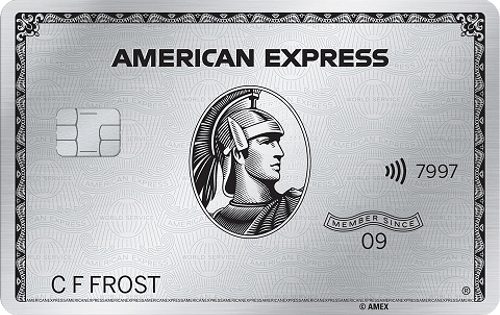
The Platinum Card ® from American Express
The Amex Platinum reigns supreme for luxury travel, offering the best airport lounge access plus generous statement credits, and complimentary elite status.
When it comes to cards that offer top-notch benefits, you’d be hard-pressed to find a better card out there than The Platinum Card ® from American Express.
Make no mistake — the Amex Platinum card is a premium card with a premium price tag. With amazing benefits like best-in-class airport lounge access , hotel elite status, and tremendous value in annual statement credits, it can easily prove to be one of the most lucrative cards in your wallet year after year.
- The best airport lounge access out of any card (by far) — enjoy access to over 1,400 worldwide lounges, including the luxurious Amex Centurion Lounges, Priority Pass lounges, Plaza Premium Lounges, and many more!
- 5x points per dollar spent on flights purchased directly with the airline or with AmexTravel.com (up to $500,000 per year)
- 5x points per dollar spent on prepaid hotels booked with AmexTravel.com
- Annual and monthly statement credits upon enrollment ( airline credit, Uber Cash credit, Saks Fifth Avenue credit, streaming credit, prepaid hotel credit on eligible stays, Walmart+ credit, CLEAR credit, and Equinox credit )
- TSA PreCheck or Global Entry credit
- Access to American Express Fine Hotels and Resorts
- Access to Amex International Airline Program
- No foreign transaction fees ( rates and fees )
- $695 annual fee ( rates and fees )
- Airline credit does not cover airfare (only incidentals like checked bags)
- Earn 80,000 Membership Rewards ® Points after you spend $8,000 on purchases on your new Card in your first 6 months of Card Membership. Apply and select your preferred metal Card design: classic Platinum Card ® , Platinum x Kehinde Wiley, or Platinum x Julie Mehretu.
- Earn 5X Membership Rewards ® Points for flights booked directly with airlines or with American Express Travel up to $500,000 on these purchases per calendar year and earn 5X Membership Rewards ® Points on prepaid hotels booked with American Express Travel.
- $200 Hotel Credit: Get up to $200 back in statement credits each year on prepaid Fine Hotels + Resorts ® or The Hotel Collection bookings with American Express Travel when you pay with your Platinum Card ® . The Hotel Collection requires a minimum two-night stay.
- $240 Digital Entertainment Credit: Get up to $20 back in statement credits each month on eligible purchases made with your Platinum Card ® on one or more of the following: Disney+, a Disney Bundle, ESPN+, Hulu, The New York Times, Peacock, and The Wall Street Journal. Enrollment required.
- $155 Walmart+ Credit: Cover the cost of a $12.95 monthly Walmart+ membership (subject to auto-renewal) with a statement credit after you pay for Walmart+ each month with your Platinum Card ® . Cost includes $12.95 plus applicable local sales tax. Plus Up Benefits are excluded.
- $200 Airline Fee Credit: Select one qualifying airline and then receive up to $200 in statement credits per calendar year when incidental fees are charged by the airline to your Platinum Card ® .
- $200 Uber Cash: Enjoy Uber VIP status and up to $200 in Uber savings on rides or eats orders in the US annually. Uber Cash and Uber VIP status is available to Basic Card Member only. Terms Apply.
- $300 Equinox Credit: Get up to $300 back in statement credits per calendar year on an Equinox membership, or an Equinox club membership (subject to auto-renewal) when you pay with your Platinum Card ® . Enrollment required. Visit https://platinum.equinox.com/ to enroll.
- $189 CLEAR ® Plus Credit: Breeze through security with CLEAR Plus at 100+ airports, stadiums, and entertainment venues nationwide and get up to $189 back per calendar year on your Membership (subject to auto-renewal) when you use your Platinum Card ® . Learn more.
- $100 Global Entry Credit: Receive either a $100 statement credit every 4 years for a Global Entry application fee or a statement credit up to $85 every 4.5 years for a TSA PreCheck ® (through a TSA official enrollment provider) application fee, when charged to your Platinum Card ® . Card Members approved for Global Entry will also receive access to TSA PreCheck at no additional cost.
- Shop Saks with Platinum: Get up to $100 in statement credits annually for purchases in Saks Fifth Avenue stores or at saks.com on your Platinum Card ® . That's up to $50 in statement credits semi-annually. Enrollment required.
- $300 SoulCycle At-Home Bike Credit: Get a $300 statement credit for the purchase of a SoulCycle at-home bike with your Platinum Card ® . An Equinox+ subscription is required to purchase a SoulCycle at-home bike and access SoulCycle content. Must charge full price of bike in one transaction. Shipping available in the contiguous U.S. only. Enrollment Required.
- Unlock access to exclusive reservations and special dining experiences with Global Dining Access by Resy when you add your Platinum Card ® to your Resy profile.
- $695 annual fee.
- Terms Apply.
Financial Snapshot
- APR: See Pay Over Time APR
- Foreign Transaction Fees: None
Card Categories
- Credit Card Reviews
- Credit Cards
- Travel Rewards Credit Cards
- Best Sign Up Bonuses
Rewards Center
American Express Membership Rewards
- Amex Platinum 150k Welcome Bonus Offer
- Benefits of The Amex Platinum
- How to Use 100,000 Amex Platinum Points
- Amex Platinum Card Requirements
- American Express Platinum Military Benefits
- Amex Platinum and Business Platinum Lounge Access
- Amex Platinum Benefits for Authorized Users
- Amex Platinum vs Delta Platinum
- Amex Platinum vs Chase Sapphire Reserve
- Capital One Venture X vs Amex Platinum
- Amex Platinum vs Delta Reserve
Hot Tip: Check to see if you’re eligible for a welcome bonus offer of up to 125k (or 150k) points with the Amex Platinum. The current public offer is 80,000 points. (This targeted offer was independently researched and may not be available to all applicants.)
If you don’t yet have the Amex Platinum card, those with excellent credit may qualify and receive a generous American Express welcome offer once meeting minimum spending requirements after card approval.
The Amex Platinum card is packed with valuable premium benefits that can save money, make travel more comfortable, and provide protection when you need it. We estimate the card’s value to be nearly $5,000 each year if you utilize all the perks.
The Amex Platinum card ‘s digital entertainment credit of up to $20 monthly is great if you’re already paying for 1 or more of these subscriptions. If you’re not currently subscribed to any of these services, you might translate the benefit as getting a complimentary digital access to The New York Times, and premium Peacock TV access.
Additionally, don’t forget to check out any discounted annual plans that these digital entertainment providers may offer. Just 1 of the $20 monthly digital entertainment credits could potentially make an annual plan a greater value.
Of course, there are several combinations for which you could subscribe, but the bottom line is that you find value when using the credit for a subscription service you’ll actually use and enjoy.
For rates and fees of The Platinum Card ® from American Express, click here .
Frequently Asked Questions
Is the amex digital entertainment credit worth it.
If you currently pay for a subscription or find value in enrolling in a new subscription with any of the eligible providers, it can be worth it.
Economically, it makes sense to use the entire $240 in annual credits, but you may need to subscribe to more than 1 service to receive the full amount.
You’ll also want to follow up on any special pricing you received to be sure the service doesn’t renew at a higher amount.
How do I use the Amex $20 monthly digital entertainment credit?
In order to be eligible for the credit, you must enroll in the benefit via your Amex Platinum card online account.
Go to the Rewards & Benefits section, select Benefits , and then select the $240 digital entertainment credit option. To finish enrollment, click the Get Started button.
Make the purchase with any of the eligible vendors using your Amex Platinum card, and receive a statement credit of up to $20 per calendar month.
Does The Business Platinum Card® from American Express have a digital entertainment credit?
No. The $20 monthly digital entertainment credit is a benefit on the personal Amex Platinum card.
Is the Amex digital entertainment credit the same as the Amex streaming credit?
No. The digital entertainment credit offered on the Amex Platinum card is only valid for purchases with service providers that include Disney+, The Disney Bundle, ESPN+, Hulu, The New York Times, Peacock, and The Wall Street Journal.
Was this page helpful?
About Christine Krzyszton
Christine ran her own business developing and managing insurance and financial services. This stoked a passion for points and miles and she now has over 2 dozen credit cards and creates in-depth, detailed content for UP.
INSIDERS ONLY: UP PULSE ™

Get the latest travel tips, crucial news, flight & hotel deal alerts...
Plus — expert strategies to maximize your points & miles by joining our (free) newsletter.
We respect your privacy . This site is protected by reCAPTCHA. Google's privacy policy and terms of service apply.
Related Posts
![new york times travel credit cards The Amex Platinum Card – Full Review [2024]](https://upgradedpoints.com/wp-content/uploads/2019/01/American-Express-Platinum-2.4.2021.png?auto=webp&disable=upscale&width=1200)
UP's Bonus Valuation
This bonus value is an estimated valuation calculated by UP after analyzing redemption options, transfer partners, award availability and how much UP would pay to buy these points.
Best no annual fee travel credit cards of April 2024
Fortune Recommends™ has partnered with CardRatings for our coverage of credit card products. Fortune Recommends™ and CardRatings may receive a commission from card issuers.
Terms apply to American Express benefits and offers. Enrollment may be required for select American Express benefits and offers. Visit americanexpress.com to learn more.
Travel rewards cards are a lot like gyms. The best ones may come with tons of added benefits (saunas, yoga class, etc.) but they also cost a lot, usually with a big financial commitment upfront.
As a result, whether you’re considering a Chase Sapphire Preferred ® Card (with its $95 annual fee) or a CrossFit membership, you probably have the same question on your mind: will I really use it enough to justify paying for it?
While there aren’t any free gyms we know of, there thankfully are plenty of no-annual-fee travel rewards cards that require essentially zero commitment. And just like an ab roller or a Richard Simmons DVD, you can simply use them a few times, forget about them, and put them in a drawer until beach season. Or, you can stick with it and make them part of your daily routine—whatever works for you.
You’re also far more likely to see “instant results” with these cards, too. From 100,000-point welcome bonuses to rewards for paying rent, free travel insurance to 3X on gas, these cards offer way more than you’d expect for a fee of $0 per year.
The best no-annual-fee travel cards for April 2024
Best overall: bilt mastercard, best for hotel rewards: ihg one rewards traveler credit card, best for airline rewards: united gateway℠ card, best for travel earnings: wells fargo autograph℠ card, best for flat-rate earnings: capital one ventureone rewards credit card.
The Bilt Mastercard allows you to earn points from paying rent and transfer them 1:1 to well over a dozen different travel partners including United MileagePlus and Marriott Bonvoy. Toss in some surprisingly robust travel insurance and you have our unconventional—yet logical—choice for the best overall no-annual-fee travel card of 2024.
Bilt Mastercard®
Special feature.

Rewards Rates
- 1x Earn 1X points on rent payments without the transaction fee, up to 100,000 points each calendar year
- 1x Earn 3X points on dining
- 2x Earn 2X points on travel
- 1x Earn 1X points on other purchases
- Use the card 5 times each statement period to earn points.
- Uniquely earns points on rent
- Rent Day bonus every first of the month offers double points (excluding rent)
- Robust travel transfer partners
- Cash redemption rate is poor
- No traditional welcome bonus
- Travel perks: Trip Cancellation and Interruption Protection, Trip Delay Reimbursement, Auto Rental Collision Damage Waiver
- See this page for details
- Foreign Transaction Fee: None
Why we like this card: As mentioned, the Bilt Mastercard’s most compelling feature is that it allows you to pay rent with a credit card—even if your landlord doesn’t take plastic—and avoid the transaction fee paying rent by credit card would typically incur. Then, as long as you complete five transactions each month, you’ll trigger 1X rewards on your rent payments.
Note that rewards on rent are capped at 100,000 points per year.
In terms of earning potential, if you pay the median ~$2,000 rent in the U.S., you could earn approximately 24,000 points per year which can be used to book travel in Bilt’s portal at a value of 1.25 cents per point or transferred to any of Bilt’s airline or hotel partners at a 1:1 ratio. In other words, you could likely earn a domestic flight with United or a weekend stay at Hyatt, all for simply paying rent on time.
The Bilt card also provides trip cancellation and interruption protection, trip delay reimbursement, and primary rental car insurance (terms apply)—perks you wouldn’t typically find on a no-annual-fee credit card.
If you’re looking for a hotel rewards card that offers the most free nights for no annual fee, wait until you read about the IHG One Rewards Traveler Credit Card. With a six-figure welcome bonus, up to 17X on stays and other compelling rewards, it’s currently the gold standard for no-fee hotel rewards.
IHG One Rewards Traveler Credit Card
Intro bonus.
- 17x Earn up to 17X points when you stay at IHG Hotels & Resorts
- 3x Earn 3X points on dining, utilities, internet, cable, and phone services, select streaming services, and at gas stations
- 2x Earn 2X points on all other purchases
- Generous welcome bonus not typically seen in a $0 annual fee card
- Travel protections that are unusual for a no-annual-fee card
- Fourth night free on award bookings
- Limited redemption options outside of IHG
- IHG points are worth less than some other rewards currencies
- Silver status granted with the card has limited benefit
- Additional perks: Trip cancelation/interruption insurance, auto rental collision damage waiver, purchase protection, ability to spend to Gold status
- Foreign transaction fee:None
Why we like this card: We like calling the IHG One Rewards Traveler card the “Liam Hemsworth” of travel rewards cards because it lives in the shadow of its big brother—the IHG One Rewards Premier Credit Card —but still delivers plenty of quality and substance in its own right (with no annual fee, to boot).
For starters, you can get a welcome bonus of 80,000 bonus points after spending $2,000 on purchases within the first 3 months of account opening, potentially worth around $500 to $700 in IHG redemption.
Plus, enjoy up to 17X points when you stay at IHG Hotels & Resorts, instant Silver Elite status and a handy bonus where you redeem points for three consecutive nights and get the fourth night in your stay free. So, if you book a three-night stay using your welcome bonus, you’ll essentially be getting a complimentary four-night stay at a nice IHG property for no annual fee. The IHG One Rewards program could be very rewarding for the right traveler.
Check out our full review of the IHG One Rewards Traveler .
As a no-annual-fee airline card, the United Gateway℠ Card currently edges out its rival the Delta SkyMiles® Blue American Express Card by offering a more generous welcome bonus and travel insurance that the Delta card does not provide. If you fly occasionally and would like to earn miles, but aren’t willing to make the commitment of $95 or more for a mid-tier airline card with more perks, the Gateway is a strong choice.
United Gateway℠ Card
- 2x 2 miles per $1 spent on United® purchases, including tickets, Economy Plus, in-flight food, beverages and Wi-Fi, baggage service charges and other United purchases.
- 2x 2 miles per $1 spent on local transit and commuting, including rideshare services, taxicabs, train tickets, tolls, and mass transit.
- 1x 1 mile per $1 spent on all other purchases
- No annual fee or foreign transaction fee
- Reward bonus categories outside of United Airlines
- Robust travel protections for a no-annual-fee card
- No baggage or expanded award availability benefits like with other United cards
- Subject to Chase 5/24 rule.
- United perks: 25% back as a statement credit on purchases of food, beverages and Wi-Fi on board United-operated flights and on Club premium drinks when you pay with your Gateway Card
- Other perks: Auto Rental Collision Damage Waiver, Trip Cancellation/Interruption insurance, Purchase Protection, Extended Warranty
- Foreign transaction fee: None
Why we like this card: The United Gateway card offers 2 miles per $1 spent on United® purchases, at gas stations and on local transit and commuting plus 1 mile per $1 spent on all other purchases. Considering a United Mile is worth roughly around 1.2 cents these days, effectively earning 2.4 cents back on everyday purchases is a solid value proposition.
You’ll also get a welcome bonus of 20,000 bonus miles after you spend $1,000 on purchases in the first 3 months your account is open. And, you can save with a discount of 25% back on United in-flight and Club Premium drink purchases.
New cardholders will enjoy a 0% Intro APR on Purchases for 12 months, after 21.99%–28.99% variable applies.
If the United Gateway card has a small lead on the Delta Skymiles Blue Amex at this point, it soars ahead (pun intended) when you look at the included travel and shopping protections. Both cards offer secondary rental car insurance, but only the Gateway includes trip cancellation and interruption insurance, purchase protection and extended warranty protection.
So, if you’re seeking a no-annual-fee card you can use to rack up miles—and you either tend to fly United most of the time or you’re at minimum not devoted to a competing airline—the United Gateway is the card to beat.
Check out our full review of the United Gateway Card for more info.
To view rates and fees of the Delta SkyMiles® Blue American Express Card, see this page
With a generous welcome bonus in exchange for an attainable spend amount, 3X on travel, and a fancy name, you’d think the Wells Fargo Autograph℠ Card would command an annual fee of at least $95. But it doesn’t, making it a superb candidate for general travel use.
Wells Fargo Autograph℠ Card
Intro bonus.
- 3X 3X points on restaurants, travel, gas stations, transit, popular streaming services and phone plans
- 1X 1X points on other purchases
- No annual fee
- 20,000 bonus points when you spend $1,000 in purchases in the first 3 months (that's a $200 cash redemption value)
- Points transfer to partners
- Car rental insurance is secondary
- No travel insurance
- Transfer partners are limited
- Additional perks: Cell Phone Protection: Provides up to $600 in cell phone protection when you pay your monthly cell bill with your Wells Fargo Autograph card. Coverage is subject to a $25 deductible and limited to two claims every 12-month period.
- Foreign transaction fee: N/A
Why we like this card: The Wells Fargo Autograph offers unlimited 3X points on restaurants, travel, gas stations, transit, popular streaming services and phone plans and even your landline bill too if you have one, plus 1X points on other purchases—all without charging an annual fee. And, to make traveling a little cheaper/less stressful, you’ll also get $600 worth of cell phone protection (minus a $25 deductible) as long as you pay your phone bill with this card and secondary rental car insurance.
Cardholders can transfer points at a 1:1 ratio to Wells Fargo’s first wave of transfer partners including Air France‑KLM Flying Blue, Avianca Lifemiles, British Airways Executive Club, AerClub, and Iberia Plus and 1:2 to Choice Privileges.
But even if you aren’t a member of those loyalty programs, earning 3X on dining, travel, gas, and more is hard to pass up. You can redeem points at a value of 1 cent each to offset past purchases on your account, meaning you can wield the Autograph either as a no-annual-fee travel card or as a cash-back card effectively earning unlimited 3% back in a wide swath of useful categories.
Check out our full review of the Wells Fargo Autograph .
Sometimes, you just want a card that offers a little more than 1X on every purchase—without having to worry about what this quarter’s rotating rewards are, or whether a specific merchant qualifies as “groceries” for the purposes of your card’s rewards. If you value simplicity and the lack of an annual fee in your travel card, you’ll probably be a fan of the Capital One VentureOne Rewards Credit Card and its straightforward rewards program.
Capital One VentureOne Rewards Credit Card

Reward Rates
- 5x Earn 5x miles on hotels and rental cars booked through Capital One Travel
- 1.25x Earn 1.25x miles on every other purchase
- Flexible travel rewards
- No foreign transaction fee
- Maximizing Capital One Miles requires a learning curve
- Cash redemption value is limited
- The VentureOne offers travel accident insurance, rental car coverage, extended warranty protection, exclusive access to events through Capital One Dining and Capital One Entertainment
Why we like this card: The Capital One VentureOne Rewards offers 1.25X miles per dollar spent on everyday purchases and 5x miles on hotels and rental cars booked through Capital One Travel. That’s pretty much all that you have to remember. You can also get a nice welcome bonus of 20,000 miles after spending $500 on purchases within 3 months from account opening, which is a solid payout for a very attainable spending target.
Capital One Miles can be transferred to well over a dozen airline and hotel partners, most at a 1:1 rate. Partners include Air Canada’s Aeroplan, British Airways Executive Club, Choice Privileges, Virgin Red, and Wyndham Rewards, among others. Other ways to book travel include redeeming miles through Capital One’s portal or making the purchase directly, paying with your card like normal, then using miles for a statement credit to cover the transaction.
The Venture One also offers a 0% intro APR on purchases for 15 months (after that, the variable APR will be 29.99%). There’s an intro balance transfer fee of 3% of the amount of each transferred balance that posts to your account during the first 15 months that your account is open , then 4% per transfer for any promotional APR offered after.
Come to think of it, provided you have the excellent credit needed to apply, the VentureOne could make a great travel companion for a grad student given its simplicity, lengthy intro APR period and low spending threshold required to trigger the welcome bonus.
Check out our full review of the Capital One VentureOne Rewards .
Frequently asked questions
Which card is best for international transactions without extra charges.
Zero foreign transaction fees is actually a common benefit among travel rewards cards, including many with no annual fee. For example, neither the Bilt Mastercard nor the United Gateway card charges a foreign currency conversion fee.
What is the best travel credit card for a young person?
If you’re still paying rent, the Bilt Mastercard is an excellent choice since it can generate points from rent payments which can then be transferred 1:1 to well over a dozen airline and hotel partners. If you’d prefer a card with a welcome bonus, which the Bilt card lacks, the IHG One Rewards Traveler card currently offers a massive welcome bonus for a no-annual-fee card—potentially worth hundreds of dollars toward a future IHG hotel stay.
Is a travel card with an annual fee worth it?
Using a travel rewards card with an annual fee can be worth it as long as you’re extracting enough points and benefits to justify paying the fee each year. If you travel infrequently or just want one less fee to worry about, consider one of the no-annual-fee cards on our list above. But, the best perks and protections are typically available on cards with annual fees.
For example, the Capital One Venture X card offers a $300 annual travel credit for bookings made through Capital One Travel. If you use that every year, you’ve gone a long way toward offsetting the $395 annual fee. You also get 10,000 bonus miles, worth at least $100 toward travel, every year starting on your account anniversary.
Methodology
To bring you our top picks for the best travel rewards cards with no annual fee, the Fortune Recommends surveyed more than a dozen cards currently available from today’s top issuers. From there, we ranked each one based on the following core categories and weights:
- Welcome bonus (10%): Some cards—even those with no annual fee—offer welcome bonuses that you can earn once you make enough purchases within a certain time frame, such as spending $1,000 within three months of account opening.
- Travel earnings (25%): These are the point rewards you’d earn by making travel-related purchases (e.g. 3X on hotels, 2X on airfare).
- Car rental insurance (15%): Many, but not all travel-centric rewards cards include an auto rental collision damage waiver, which allows you to decline a portion of the rental company’s insurance and save potentially up to $30 per day. We gave extra consideration to if a card offers primary rental car insurance versus secondary, because primary kicks in immediately in a covered scenario—whereas secondary only applies after your own, personal insurance.
- Travel insurance benefits (15%): Some travel rewards cards automatically apply trip cancellation/interruption insurance, lost/delayed luggage reimbursement and even travel accident insurance on travel bookings made using the card.
- Gas earning (5%): Since road trips remain a common form of travel, whether or not a card offers points rewards at the pump factored into our rankings.
- Dining earning (10%): If a no-annual-fee travel rewards card offered 2X or more on restaurant purchases it favored well in this category.
The remaining 20% was based on the card’s main focus: hotel, airline or general travel rewards.
- For general travel—points transferrable to partners (20%): Points are literally worth more if you can transfer them to certain partners, so a card’s ability to transfer rewards to airline and hotel partners factored into our rankings.
- For hotel rewards—free award night with booking (20%): Some hotel rewards cards offer a BOGO-like perk where if you redeem a certain number of nights with points you get an extra tacked on for free.
- For airline rewards—ability to spend towards status (20%): Most airline rewards cards allow you to earn miles, but not all of them count those miles towards your next loyalty status. If a card treated them as “qualifying miles,” it fared better in this category.
Lastly, just keep in mind that virtually every aspect of a travel rewards card—from the rewards to the welcome bonus and fee structure—is subject to change, which could impact how many miles or points you earn.
Eligibility and Benefit level varies by Card. Terms, Conditions, and Limitations Apply. Please visit americanexpress.com/benefits guide for more details. Underwritten by Amex Assurance Company.
Please note that card details are accurate as of the publish date, but are subject to change at any time at the discretion of the issuer. Please contact the card issuer to verify rates, fees, and benefits before applying.
EDITORIAL DISCLOSURE : The advice, opinions, or rankings contained in this article are solely those of the Fortune Recommends ™ editorial team. This content has not been reviewed or endorsed by any of our affiliate partners or other third parties.
Guide to travel rewards credit cards
Best travel credit cards of april 2024, luxury travel for less: your guide to free airport lounge passes, 10 credit card tips to help you avoid disaster when traveling abroad, how credit card travel insurance works—and what it doesn’t cover, insure your adventures: the ultimate guide to credit cards offering travel insurance, how credit card rental car insurance saves money on every rental, chase lga lounge review: luxury at laguardia, chase beefs up new york profile with a new jfk sapphire lounge—here's what you need to know, biggest-ever amex centurion lounge opens in atlanta — with outdoor terraces and bars for both whiskey and smoothies, amex centurion lounge atlanta: what to expect now that it’s open, how to use your credit card to save on travel as airline costs soar, do you have travel rewards saved up these are the best ways to use them, 5 ways your credit card can help you save on spring break travel costs, capital one lounge: what you need to know, how i travel with my wife for less than a date night, best credit cards for cheap airport lounge access in april 2024.

Why April Is a Great Month to Apply for a New Travel Credit Card
T ravel credit cards are an excellent way for budget-conscious travelers to start saving for their next big adventure. Many of the top travel credit cards earn points and miles on your everyday spending, helping you turn groceries and gas into a business-class ticket to your next destination.
While these cards can come in handy all-year-round, they're especially useful for those who are planning summer vacations. After all, with the average American planning to take at least three trips this summer (at about $2,743 per trip, according to Go City), a travel card in your quiver ensures you're collecting the most rewards for those travel purchases. So, if you have the credit score and financial stability to get a new card, here's why April might be a good time to start applying.
Featured offer: save money while you pay off debt with one of these top-rated balance transfer credit cards
1. Earn your sign-up bonus early
Signing up for a new credit card often puts you in the race for a welcome bonus. Many of the best travel credit cards have hefty bonuses that could put as much as $750 (or more) toward your next adventure.
The problem, of course, is that you have to hit certain spending limits before that bonus becomes yours. There also might be a lag between the moment you hit the requirements and the moment when the bonus is credited to your account. For instance, a card might have a welcome bonus of 75,000 miles when you spend $4,000 within three months of opening your account. Once you hit those requirements, the card issuer will apply the bonus to your rewards balance within two billing cycles.
If you get your travel credit card in April, that gives you some time to hit the bonus requirements before it's time to start traveling in the summer. You can charge any bookings or reservations you make in advance to your card, helping you hit the required spending threshold. If you get your bonus in time, you might be able to apply it as a statement credit against these charges, though if your card doesn't have a 0% APR intro period , don't hesitate to pay them off.
2. Start earning rewards for summer travel
Getting a travel card in April means you can start building up a slew of points or miles, which you can then use to cover portions of your summer travel.
Most travel cards will earn extra points or miles for travel purchases. But many of the best travel cards will also earn extra on various spending categories, like food or fuel. Since you're probably already budgeting for this spending, one of these cards can help you set points aside for your future travel.
Of course, you don't need a travel credit card to earn extra points. In fact, you might be better off with a cash back credit card that more closely aligns with your spending. You can accumulate this cash back, then use it to help cover your travel purchases. A few types of credit cards that might help you earn more include:
- Best credit cards for dining and restaurants
- Best credit cards for gas and groceries
- Best credit cards for streaming services
- Best credit cards for large purchases
3. Take advantage of travel insurance
Finally, many credit cards have hefty travel insurance built into their cards. This insurance could include trip cancellation, trip delay, rental collision, baggage delay, lost luggage reimbursement, and travel accident, among others. When you book your summer travel with a card that has travel insurance , that coverage is available for you to use, if you need it. If you're thinking about buying travel insurance, this could save you some money.
All things considered, getting a travel credit card now means you can start earning rewards for your summer travel plans. This could include covering airfare, hotels, or other charges, like baggage or food. Take a look at some of our favorite travel cards and see if it's worth applying for a new one in April.
Alert: our top-rated cash back card now has 0% intro APR until 2025
This credit card is not just good – it’s so exceptional that our experts use it personally. It features a lengthy 0% intro APR period, a cash back rate of up to 5%, and all somehow for no annual fee! Click here to read our full review for free and apply in just 2 minutes.
We're firm believers in the Golden Rule, which is why editorial opinions are ours alone and have not been previously reviewed, approved, or endorsed by included advertisers. The Ascent does not cover all offers on the market. Editorial content from The Ascent is separate from The Motley Fool editorial content and is created by a different analyst team.The Motley Fool has no position in any of the stocks mentioned. The Motley Fool has a disclosure policy .

Advertisement
Supported by
Can’t Find Eclipse Glasses? Here’s What to Do.
You can watch a projection of the eclipse using some common household items.
- Share full article

By Katrina Miller
Follow our live updates on the total solar eclipse .
Reliable paper-framed glasses are by far the most popular option for safely watching the total solar eclipse on Monday. But they’ve gotten more difficult to find in some places ahead of the event.
If you’ve checked everywhere — your local planetarium, public library and even online — fear not: There is still a way to watch the eclipse safely, using items around the house. Here are a few options.
Use your hands
Palms up, position one hand over the other at a 90-degree angle. Open your fingers slightly in a waffle pattern, and allow sunlight to stream through the spaces onto the ground, or another surface. During the eclipse, you will see a projection of the moon obscuring the surface of the sun.
This method works with anything with holes, such as a straw hat, a strainer, a cheese grater or even a perforated spoon. You will also notice this effect when light from the partially eclipsed sun streams through leaves on a tree.
Set up a cardstock screen
For this option, you need a couple of white index cards or two sheets of cardstock paper. First, punch a small hole in the middle of one of the cards using a thumbtack or a pin.
Then, facing away from the sun, allow light to stream through this pinhole. Position the second card underneath to function as a screen. Adjust the spacing between the two cards to make the projection of the sun larger or smaller.
Make a box projector
If you’re up for a bit of crafting, you can make a more sophisticated pinhole projector . Start with a cardboard box — empty cereal boxes are often used, but you can use a larger box, too. You’ll also need scissors, white paper, tape, aluminum foil and a pin or thumbtack.
Cut the piece of paper to fit the inside bottom of the cardboard box to act as a screen. Use tape to hold it in place.
On the top of the box, cut two rectangular holes on either side. (The middle should be left intact — you can use tape to secure this if needed.)
Tape a piece of aluminum foil over one of the rectangular cutouts. Punch a tiny hole in the middle of the foil with the tack or pin. The other cutout will serve as a view hole.
With your back to the sun, position the foil side of the box over your shoulder, letting light stream through the pinhole. An image of the sun will project onto the screen at the bottom of the box, which you can see through the view hole. A bigger box will create a bigger image.
Enjoy the show through any of these makeshift pinholes. And remember, during totality, you can view the sun directly with your naked eye. But you should stop looking at the sun as soon as it reappears.
Katrina Miller is a science reporting fellow for The Times. She recently earned her Ph.D. in particle physics from the University of Chicago. More about Katrina Miller

IMAGES
VIDEO
COMMENTS
The Capital One Venture X Visa card ($395) offers 75,000 miles after spending $4,000 in three months. The Citi AAdvantage Executive World Elite Mastercard ($595) was recently offering 100,000 ...
NerdWallet's Best Travel Credit Cards of April 2024. Earn $100 in rewards when you get a NerdWallet+ eligible credit cardJoin NerdWallet+ and pay your first credit card bill on time to start ...
The Chase Sapphire Reserve is one of our top premium travel cards. With a $300 travel credit, bonus points on dining and travel purchases and other benefits, you can get excellent value that far exceeds the annual fee on the card. Read our full review of the Chase Sapphire Reserve card. VIEW MORE.
No annual fee: Bank of America® Travel Rewards credit card. Flat-rate travel rewards: Capital One Venture Rewards Credit Card. Bonus travel rewards and high-end perks: Chase Sapphire Reserve ...
Travel lovers now have another great credit card option with the launch of the Wells Fargo Autograph Journey℠ Visa® Card * in March 2024. This new card earns 5 points per dollar on hotels, 4 ...
One thing premium travel credit cards do have in common: three-figure annual fees. There are nine cards out there today that we consider "Premium Travel Cards.". They are: The Platinum Card ...
Free checked bags: Some airline credit cards offer free checked bags, which can add up to real savings when applied per person on a round trip.This is one way that Doug Figueroa, a content creator ...
NerdWallet's Best Credit Cards for International Travel of April 2024. Chase Sapphire Preferred® Card: Best for Flexibility and value. Capital One Venture Rewards Credit Card: Best for Simplicity ...
These days, I get the paper delivered to my New York City apartment every Saturday and Sunday. Now, when I'm at home, I look forward to waking up early, grabbing the paper while sipping my favorite latte from a neighborhood cafe. The $20 per month credit covers nearly the full cost of my NYTimes print subscription. (Screenshot courtesy of Amex)
Sally French is a travel rewards expert who joined NerdWallet in 2020. She previously wrote about travel and credit cards for The New York Times and its sibling site, Wirecutter.
Here are the best travel credit cards on the market right now, plus more affordable alternatives well worth considering. ... SiriusXM and the New York Times). You can also score a $155 Walmart+ ...
Check out the latest travel credit card stories from the team at Bankrate. We'll give you advice so you can use credit cards to travel to your next destination for nearly free.
Financial experts and passionate credit card users recommend the 11 best credit cards for every type of spender, including Chase Freedom Unlimited Card, Bank of America Travel Rewards Card, Chase ...
Capital One VentureOne Rewards Credit Card: First travel card: 20,000 miles after spending $500 on purchases within 3 months from account opening: $0 (See Rates and Fees) 4.1 / 5: Bank of America® Travel Rewards credit card: Occasional travelers: 25,000 online bonus points after you make $1,000 in purchases in the first 90 days of account ...
The Amex Platinum card's digital entertainment credit of up to $20 per month is valid only for specific purchases and subscriptions. Get up to $20 back each month on eligible purchases made with your card on 1 or more of the following: Disney+, The Disney Bundle, ESPN+, Hulu, The New York Times, Peacock, and The Wall Street Journal. You must ...
The Chase Sapphire Reserve® comes with an easy-to-use $300 travel credit that offsets its hefty price tag of $550. You'll get a statement credit on any travel purchases you make with your card from flights and hotels to public transportation or rideshares like Uber or Lyft. It's that easy to use.
A nonprofit group called R.I.P. Medical Debt has relieved Americans of $11 billion in hospital bills. But that did not improve their mental health or their credit scores, a study found.
The Justice Department said more than $1.4 billion in stolen relief funds have been seized or forfeited. But estimates of the total stolen run into the tens of billions.
Using a travel rewards credit card has long been celebrated as an easy strategy to travel the world for less. ... Earn a $200 statement credit after you spend $2,000 in purchases on your new Card ...
Use the card 5 times each statement period to earn points; ... New cardholders will enjoy a 0% Intro APR on Purchases for 12 months, after 21.99%-28.99% variable applies. ... What is the best ...
Costco may be selling up to $200 million worth of the bars each month, according to a Wells Fargo analysis. The bars sell out quickly, and customers are trading advice online about how to get them.
2. Start earning rewards for summer travel. Getting a travel card in April means you can start building up a slew of points or miles, which you can then use to cover portions of your summer travel.
Set up a cardstock screen. For this option, you need a couple of white index cards or two sheets of cardstock paper. First, punch a small hole in the middle of one of the cards using a thumbtack ...